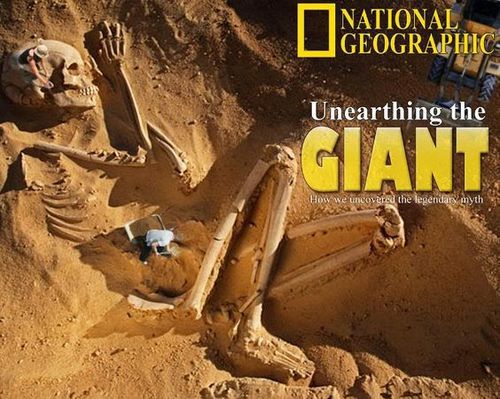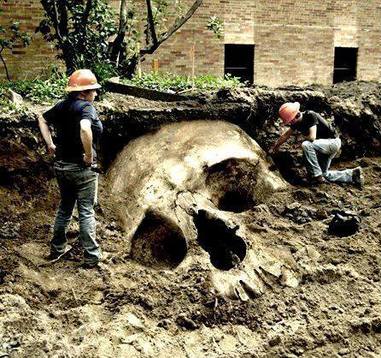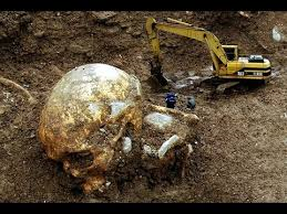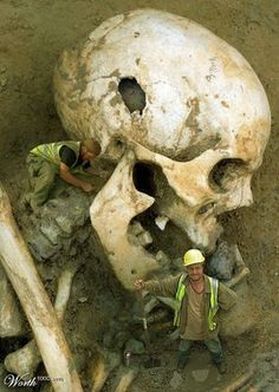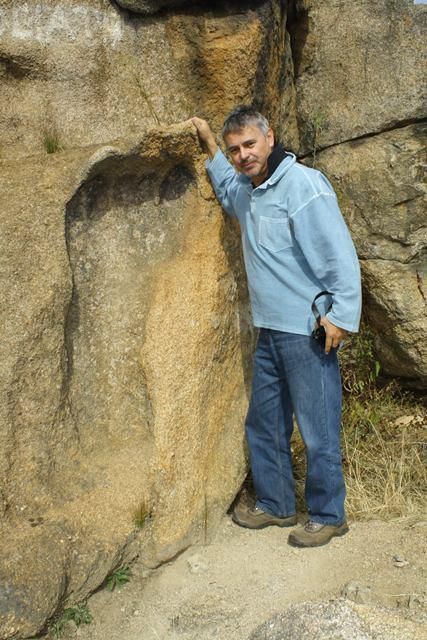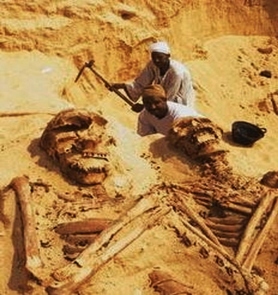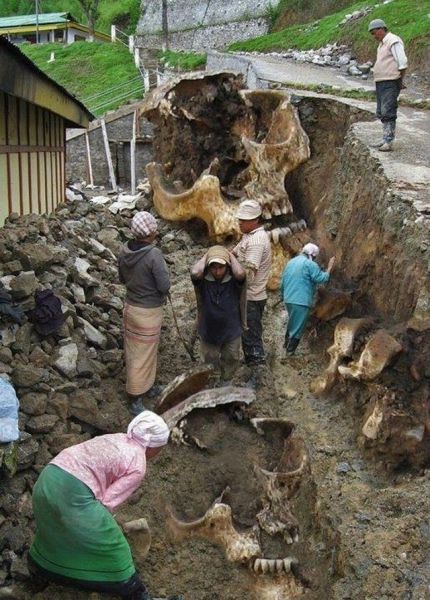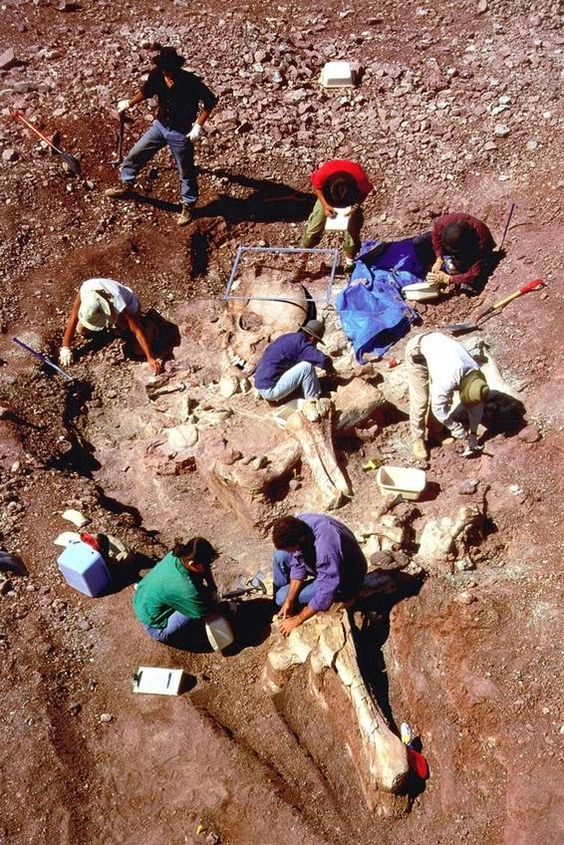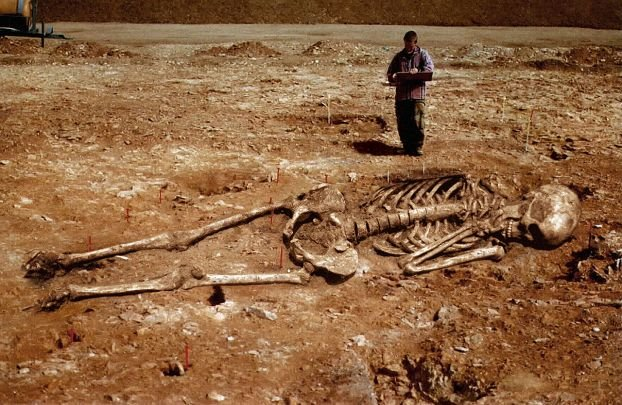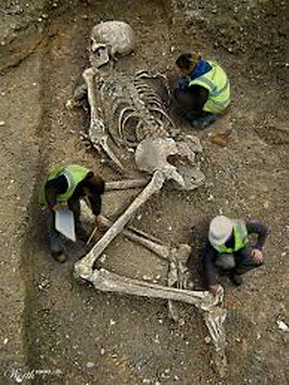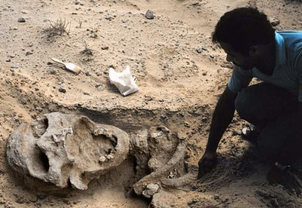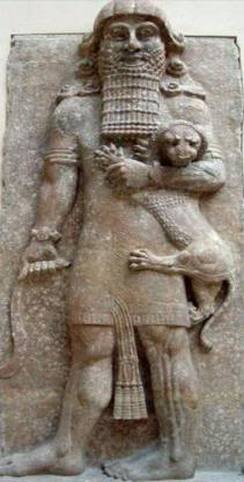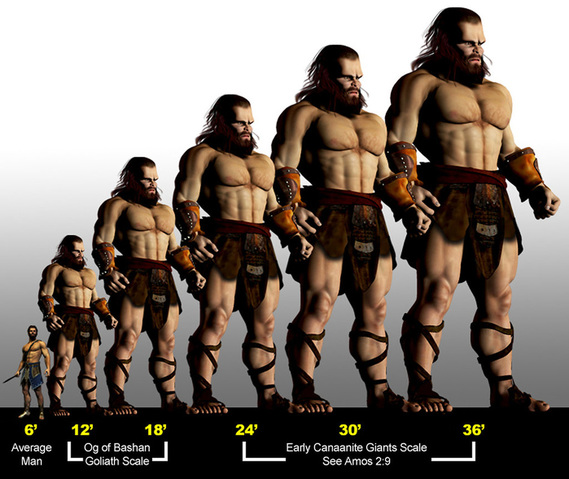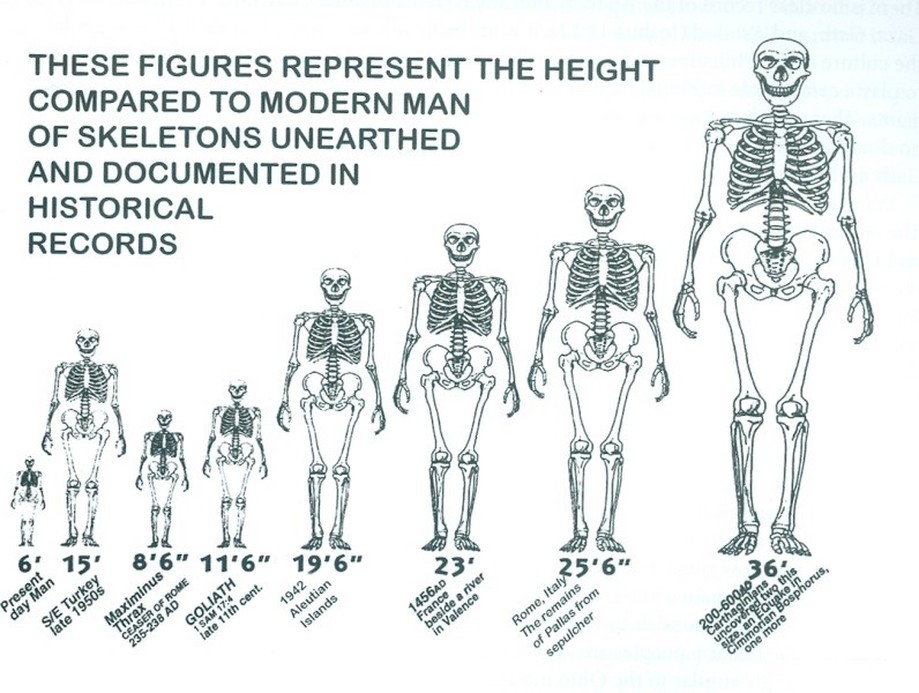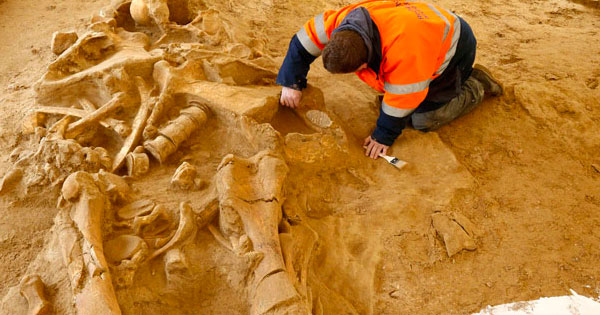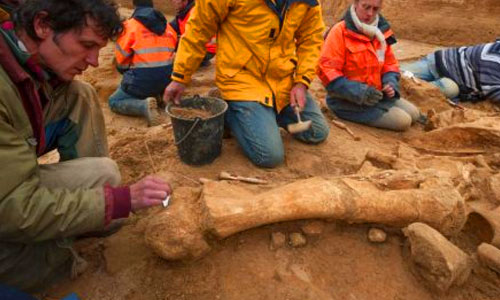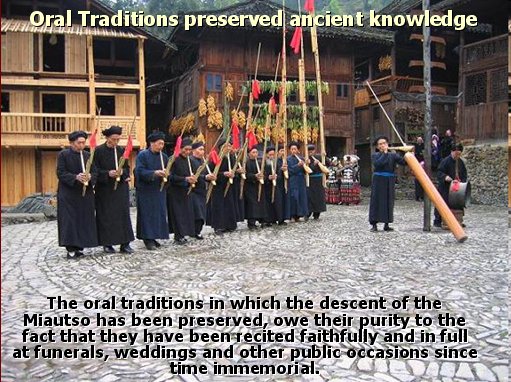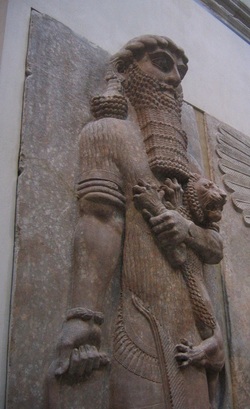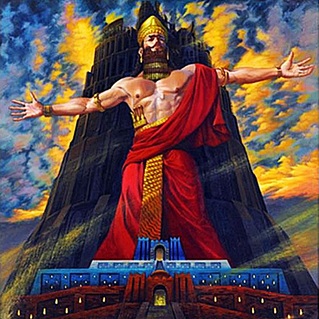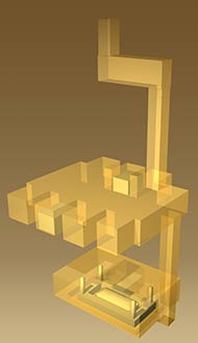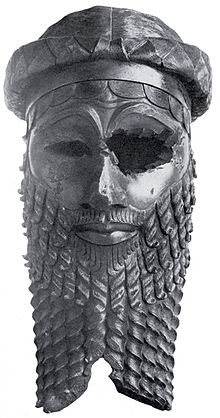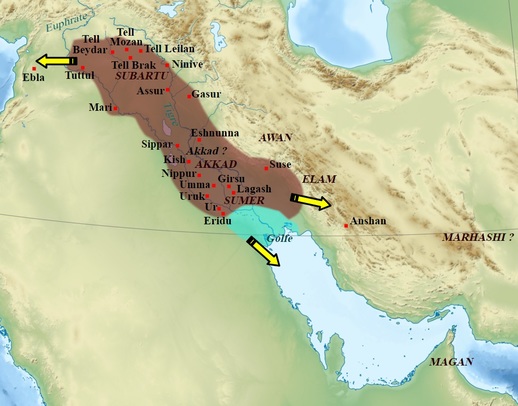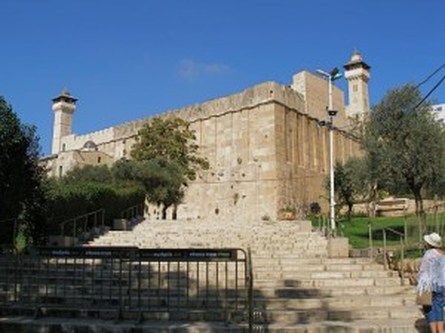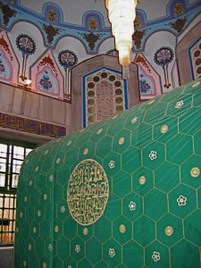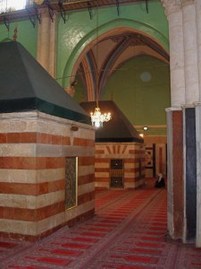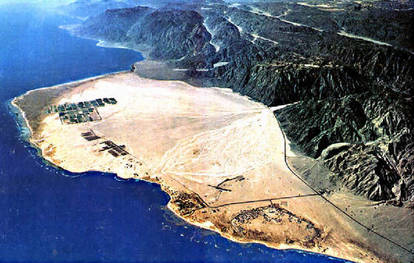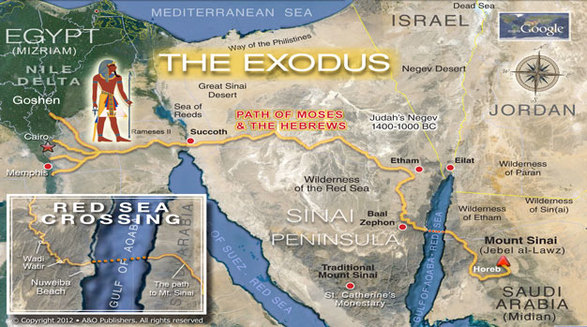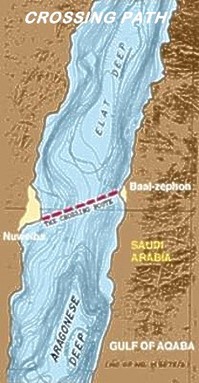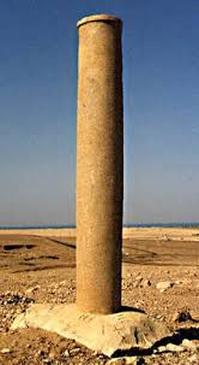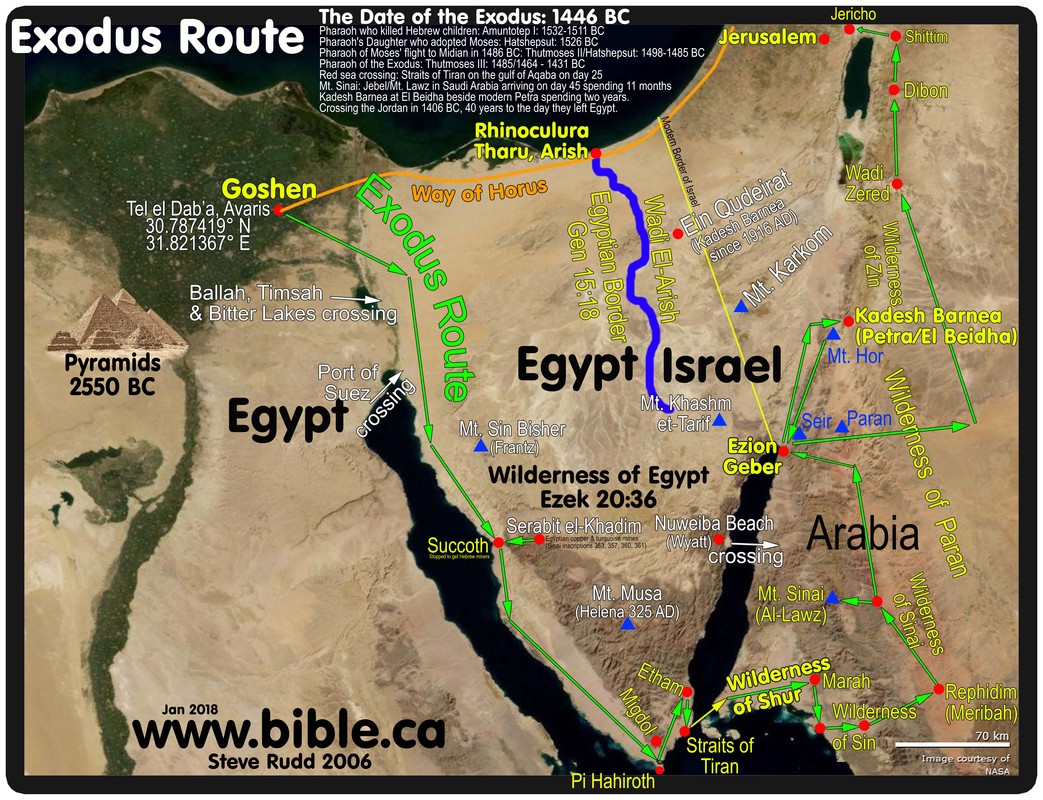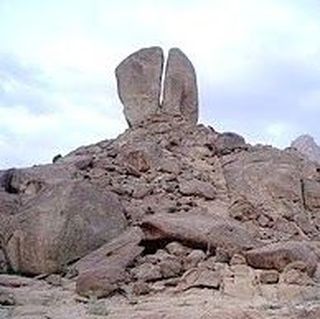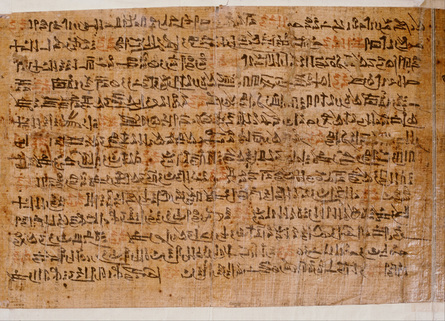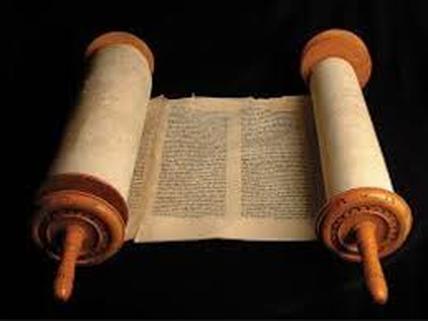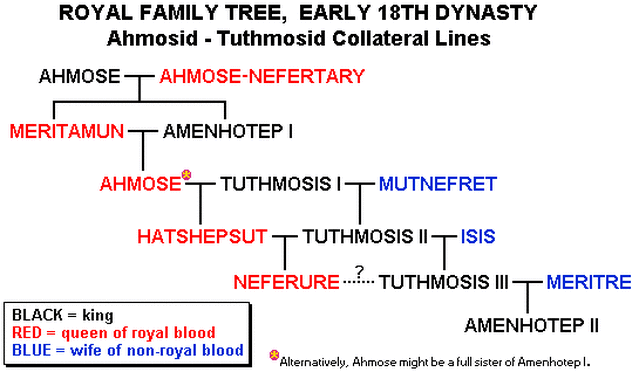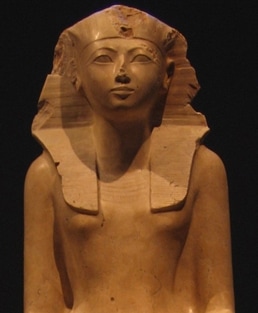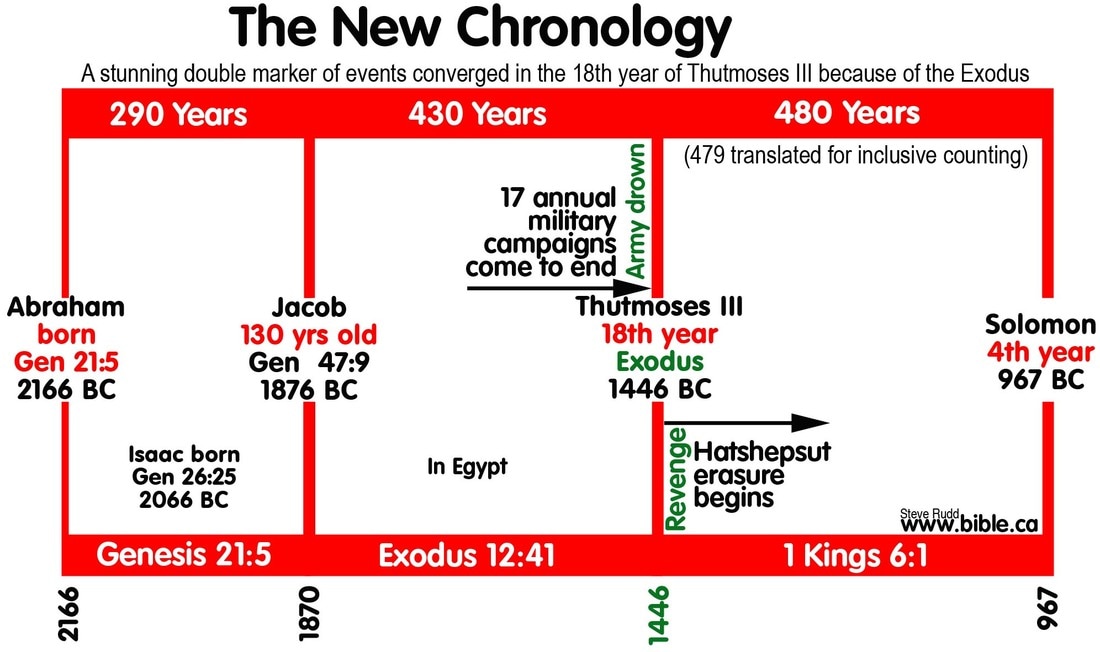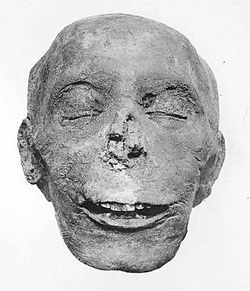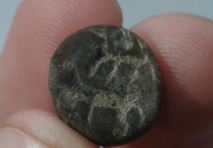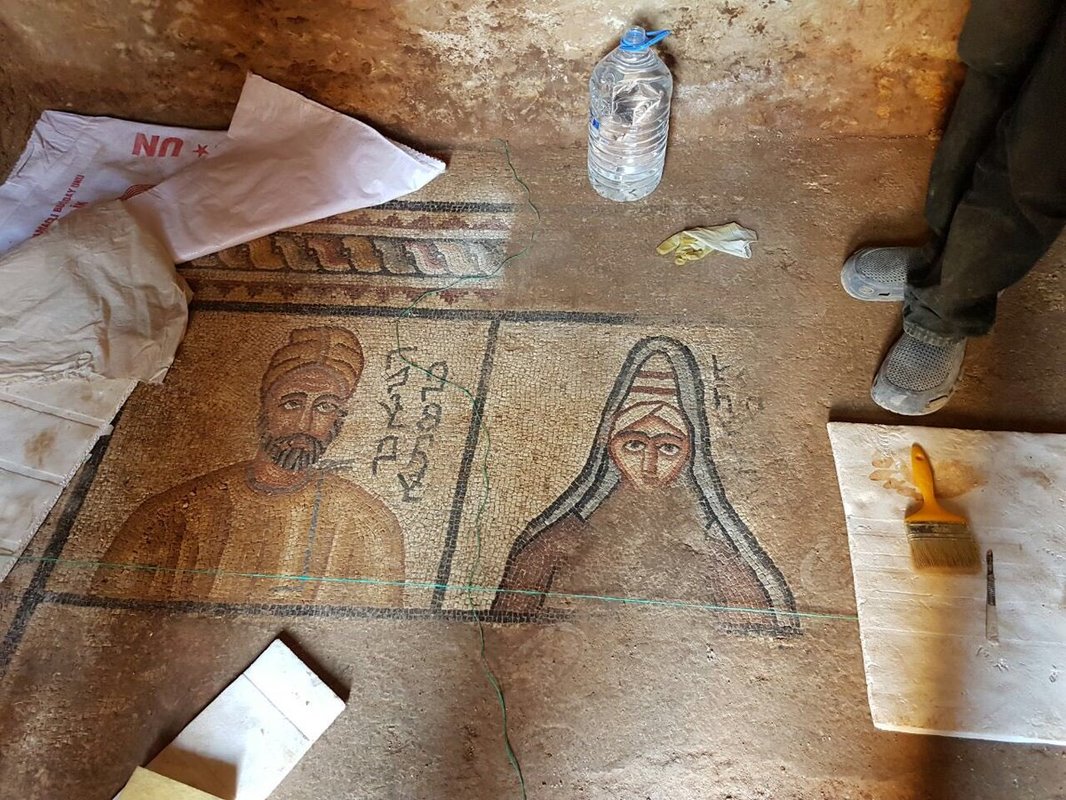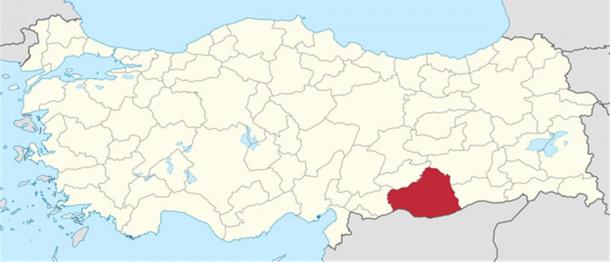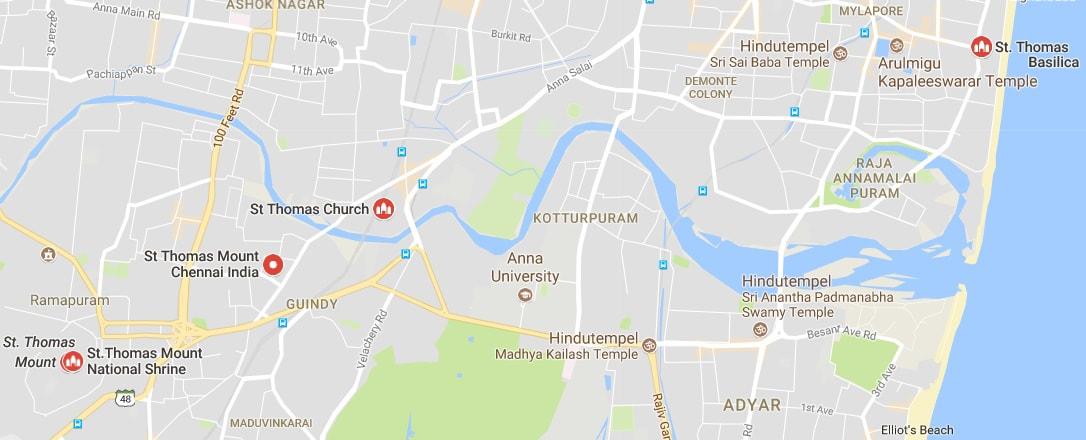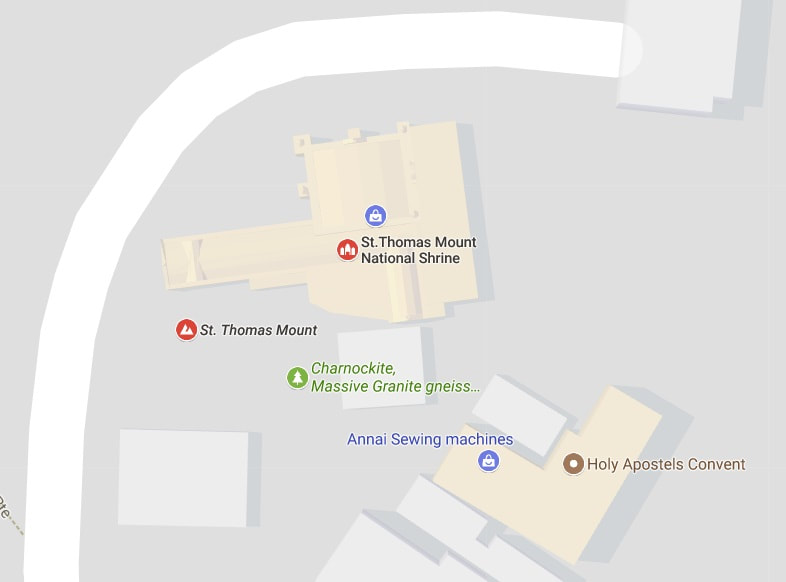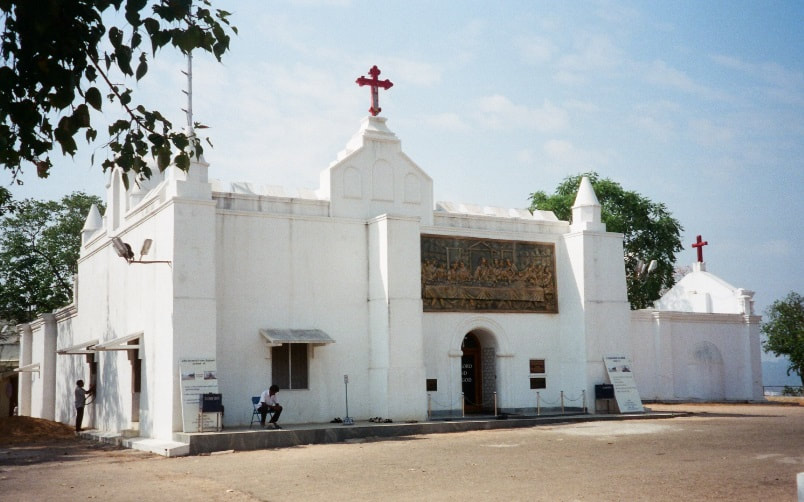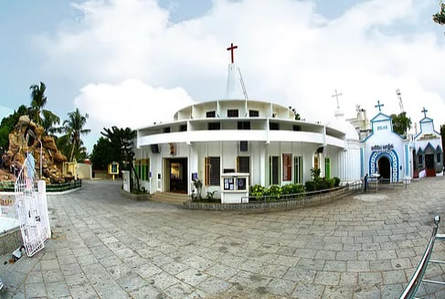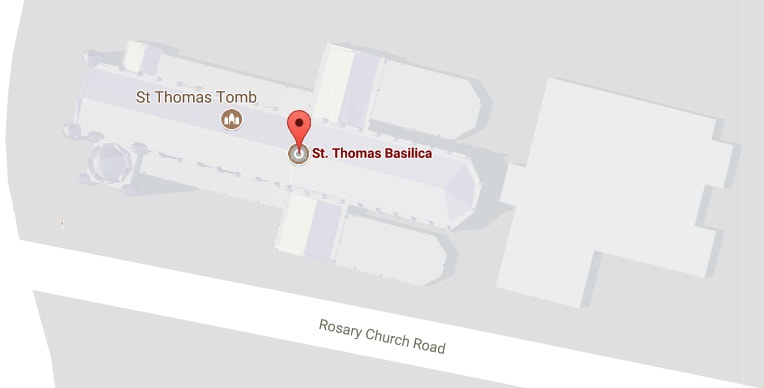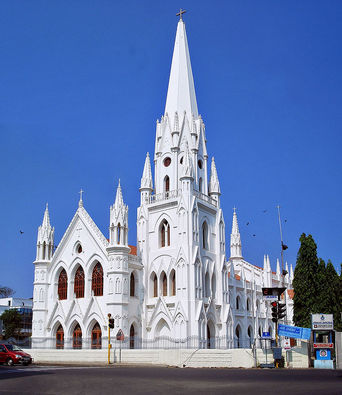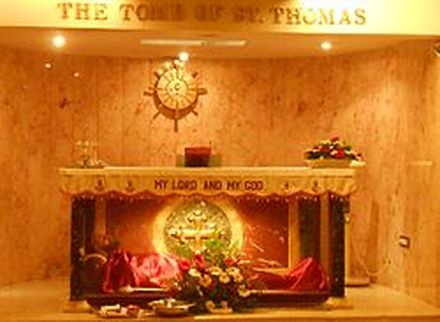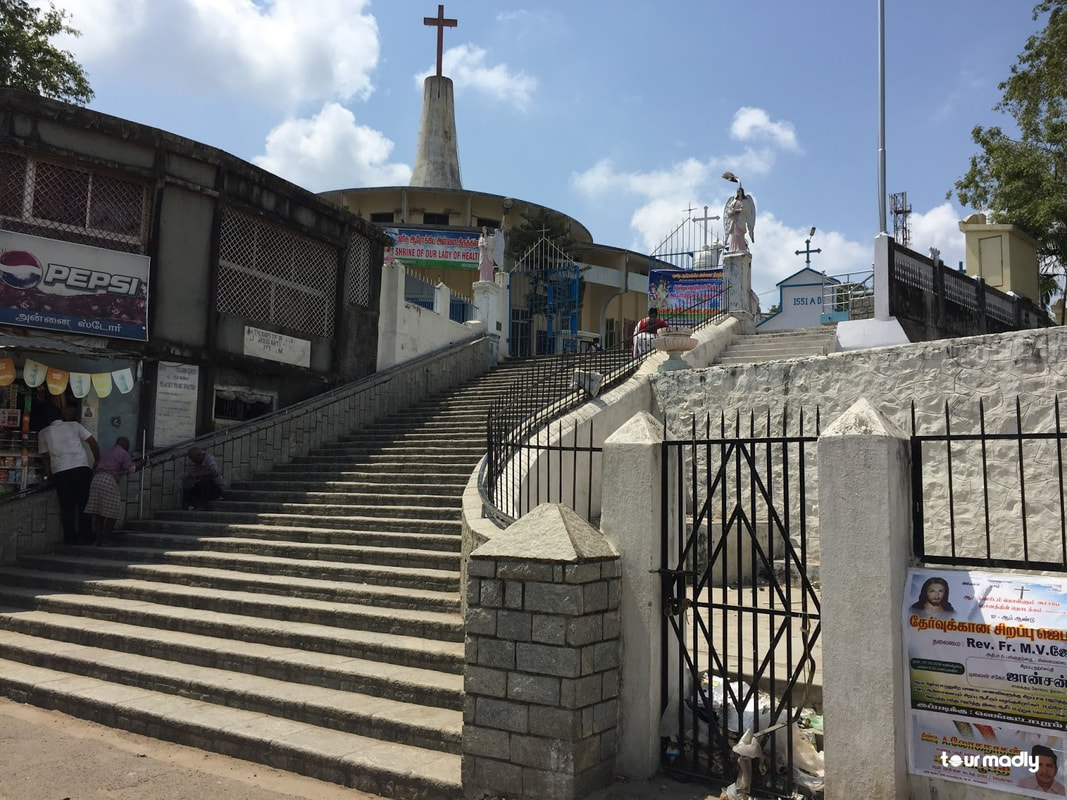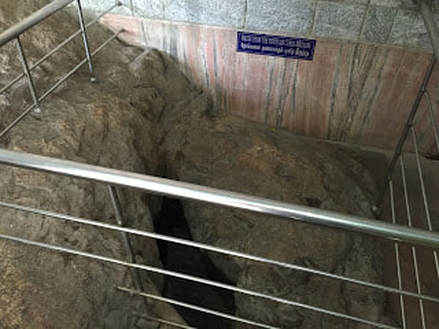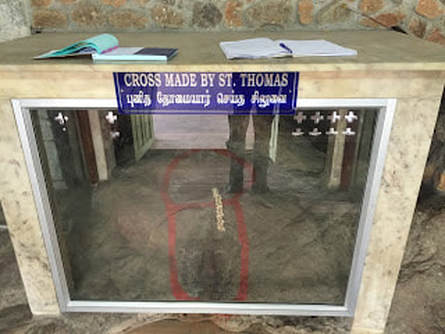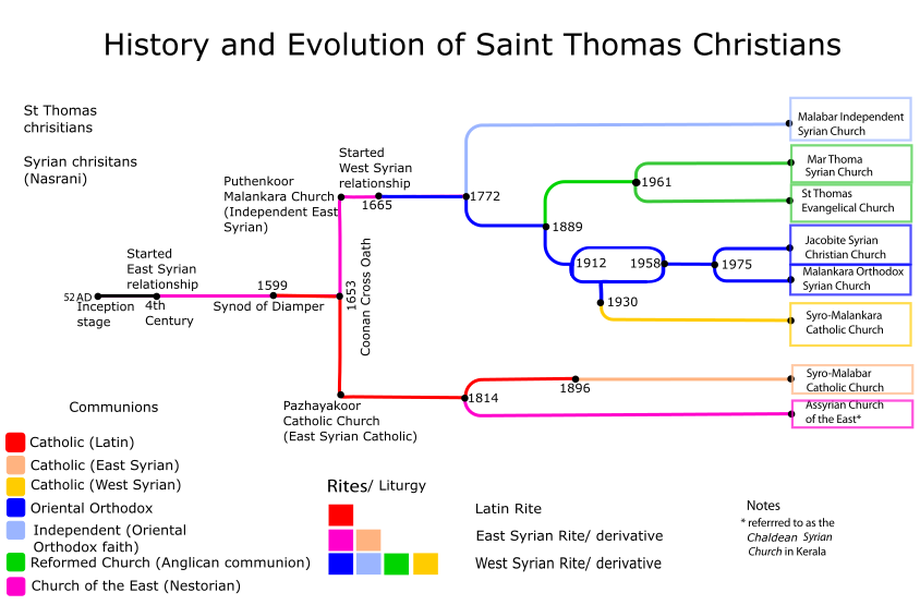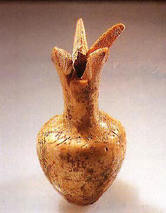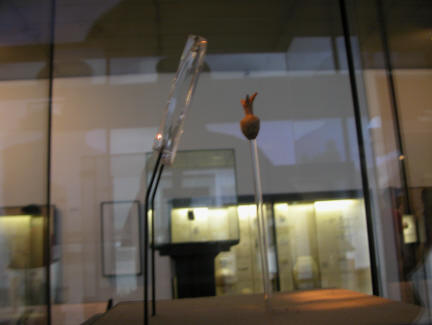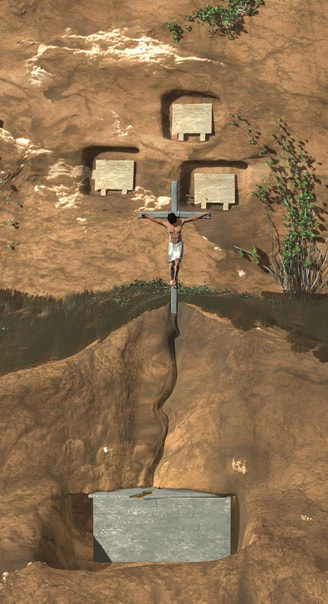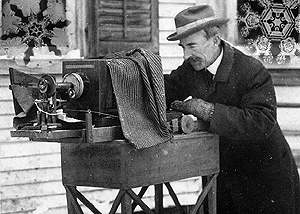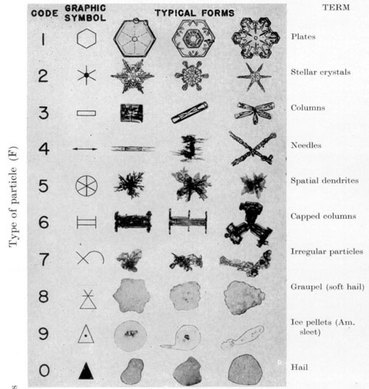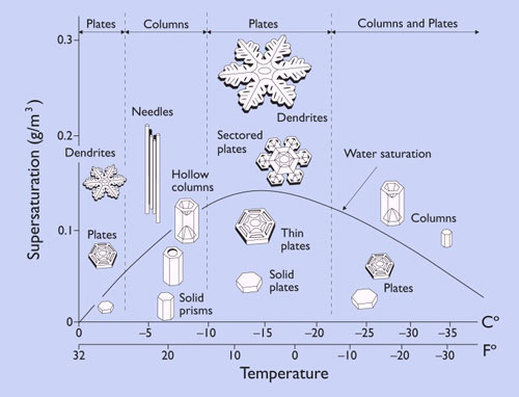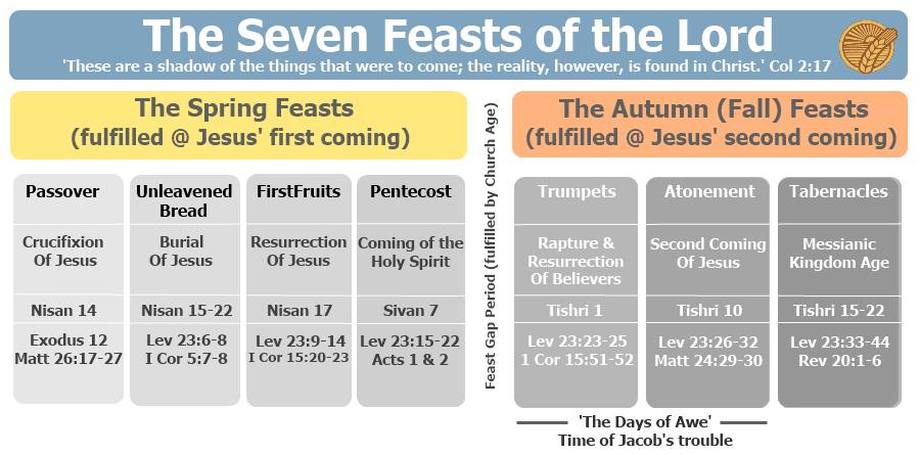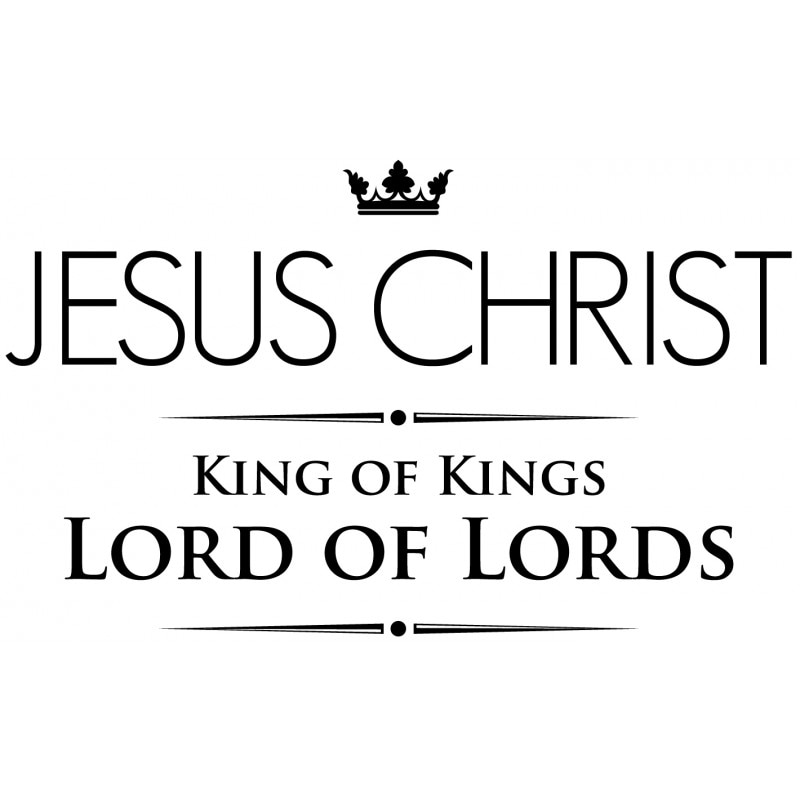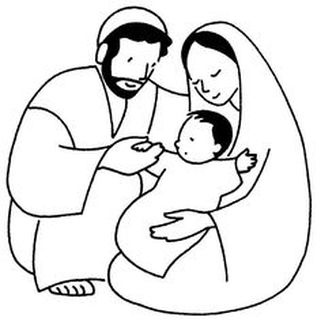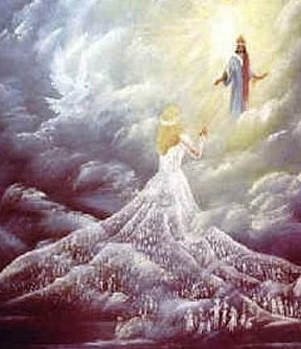Bible Summary
The Bible is the oldest book known to human race and The Bible still remains as the best seller around the world. Why is that? There could be many reasons but one of them is that The Bible has made Extraordinary claims which really demands Extraordinary evidences. The Bible is used by many including Archaeologists (as a source for their research), Historians, Anthropologists, Theologians, Christians, Muslim, Catholics and many others worldwide.
We shall explore the evidences of The Bible here through
- Archeological Evidences (including secular historical records)
- Science (e.g. Science as we know today, logical facts, Mathematical Models/Calculations etc) and
- Prophecies
For those who are interested in the overview of The Bible Timeline and its stories, it can be an interesting reading about the sequence of events overview described in The Bible about 7000 years ago from Old Testaments to New Testaments.
We shall explore the evidences of The Bible here through
- Archeological Evidences (including secular historical records)
- Science (e.g. Science as we know today, logical facts, Mathematical Models/Calculations etc) and
- Prophecies
For those who are interested in the overview of The Bible Timeline and its stories, it can be an interesting reading about the sequence of events overview described in The Bible about 7000 years ago from Old Testaments to New Testaments.
In discovering the unknown, an old wise man once advised us these:
- "If we cannot explain it, it could be we do not understand it."
- "If we have not found it, do not think it does not exist."
- "If we have not experienced it, do not think it does not exist."
- "If you could not see it, it does not mean that it is not there."
In the age of Information, Ignorance is a choice. by Donald Miller
Archeological Evidences
First, we explore the claims of The Bible through Archaeological finds. It is interesting that we can find a number of verses in The Bible from Old Testaments to New Testaments that reference to Archaeological finds. To name a few:
Psalm 85:11 (KJV) Truth shall spring out of the earth; and righteousness shall look down from heaven.
Luke 19:40 (KJV) And he answered and said unto them, I tell you that, if these should hold their peace, the stones would immediately cry out.
Luke 19:40 (NIV) “I tell you,” he replied, “if they keep quiet, the stones will cry out.”
Let us go through the overview sequence of events in the The Bible and reference it to our known Archeological or Historian accounts or both. The topics covered here:
1. Giants
2. Noah's Ark & Flood Story
3. Nimrod (Leader of Tower of Babel)
4. Abraham, Isaac and Jacob burial sites
5. Exodus from Egypt
6. King David
7. Is the Legend True? Did Jesus Write a Letter to King Abgar?
8. Twelve Disciples of Jesus
9. Dead Sea Scrolls, Septuagint Bible and forbidden books
10. Ark of Covenant and Jesus Christ DNA
Psalm 85:11 (KJV) Truth shall spring out of the earth; and righteousness shall look down from heaven.
Luke 19:40 (KJV) And he answered and said unto them, I tell you that, if these should hold their peace, the stones would immediately cry out.
Luke 19:40 (NIV) “I tell you,” he replied, “if they keep quiet, the stones will cry out.”
Let us go through the overview sequence of events in the The Bible and reference it to our known Archeological or Historian accounts or both. The topics covered here:
1. Giants
2. Noah's Ark & Flood Story
3. Nimrod (Leader of Tower of Babel)
4. Abraham, Isaac and Jacob burial sites
5. Exodus from Egypt
6. King David
7. Is the Legend True? Did Jesus Write a Letter to King Abgar?
8. Twelve Disciples of Jesus
9. Dead Sea Scrolls, Septuagint Bible and forbidden books
10. Ark of Covenant and Jesus Christ DNA
1. Giants
From Adam and Eve to Noah’s time (about 5500 BC to 3300 BC), The Bible tells us that the fallen angels were procreating with daughters of men making an entire hybrids called the Nephilim who were mostly giants. Genesis 6:4 There were giants in the earth in those days; and also after that, when the sons of God came in unto the daughters of men, and they bare children to them, the same became mighty men which were of old, men of renown. The Nephilim creation is an abormination to God. The strange species of fallen angel-mankind or fallen angel-animal combination created terror to mankind. According to The Bible, God made His decision to wipe out the entire population worldwide. Genesis 6:7 And the Lord said, I will destroy man whom I have created from the face of the earth; both man, and beast, and the creeping thing, and the fowls of the air; for it repenteth me that I have made them. Since Noah and his family found favor with God, God spared Noah and his family with the building an Ark for his family and the animals. Millions perished during the flood. From the 8 people (Noah, his wife, his 3 sons Shem, Ham & Japheth, his 3 daughter in laws), mankind started again. However, the Nephilim came back to existence again as we know it during Tower of Babel incident where Nimrod (great grandson of Noah or grandson of Ham) was portrait as having a lion as a pet like a cat to us today. The Bible tells us that Nimrod was a great hunter. There were also other giants after Nimrod, for instance, Goliath and his brothers who are cousins to King David as described in The Bible.
The archaeological evidences of giants existed as shown in various digs around the world (e.g. Europe, Middle East, Russia, China, America, etc). In American Indian culture, there has been some records and stories of Red Hair Giants that were aggressive and eating humans. Based on some findings, older giant bones seemed to be bigger when it is carbon dated. The giants of today are no longer as huge. These pictures taken from various digs around the world can be seen below.
With these findings, the Evolution Theory (popularized by Charles Darwin in mid 19th century or publication of his book called On the Origin of Species in 1859) just breaks down because we cannot find so many apes this big to become giant humans. However, for those who are not aware about Evolution Theory, it originated from Empedocles from Greek Empire in about 450 BC and later survived into the Roman Empire in 99 BC by Lucretius. The pagans in Ancient Greece had already came up with this Theory about 2300 years before Darwin came along. It is mind boggling that mankind would believe in Evolution Theory without evidences till today after 2300 years since its inception while not believe in The Bible that has evidences to show for. Perhaps we have lost our logic in the midst of information overload.
From Adam and Eve to Noah’s time (about 5500 BC to 3300 BC), The Bible tells us that the fallen angels were procreating with daughters of men making an entire hybrids called the Nephilim who were mostly giants. Genesis 6:4 There were giants in the earth in those days; and also after that, when the sons of God came in unto the daughters of men, and they bare children to them, the same became mighty men which were of old, men of renown. The Nephilim creation is an abormination to God. The strange species of fallen angel-mankind or fallen angel-animal combination created terror to mankind. According to The Bible, God made His decision to wipe out the entire population worldwide. Genesis 6:7 And the Lord said, I will destroy man whom I have created from the face of the earth; both man, and beast, and the creeping thing, and the fowls of the air; for it repenteth me that I have made them. Since Noah and his family found favor with God, God spared Noah and his family with the building an Ark for his family and the animals. Millions perished during the flood. From the 8 people (Noah, his wife, his 3 sons Shem, Ham & Japheth, his 3 daughter in laws), mankind started again. However, the Nephilim came back to existence again as we know it during Tower of Babel incident where Nimrod (great grandson of Noah or grandson of Ham) was portrait as having a lion as a pet like a cat to us today. The Bible tells us that Nimrod was a great hunter. There were also other giants after Nimrod, for instance, Goliath and his brothers who are cousins to King David as described in The Bible.
The archaeological evidences of giants existed as shown in various digs around the world (e.g. Europe, Middle East, Russia, China, America, etc). In American Indian culture, there has been some records and stories of Red Hair Giants that were aggressive and eating humans. Based on some findings, older giant bones seemed to be bigger when it is carbon dated. The giants of today are no longer as huge. These pictures taken from various digs around the world can be seen below.
With these findings, the Evolution Theory (popularized by Charles Darwin in mid 19th century or publication of his book called On the Origin of Species in 1859) just breaks down because we cannot find so many apes this big to become giant humans. However, for those who are not aware about Evolution Theory, it originated from Empedocles from Greek Empire in about 450 BC and later survived into the Roman Empire in 99 BC by Lucretius. The pagans in Ancient Greece had already came up with this Theory about 2300 years before Darwin came along. It is mind boggling that mankind would believe in Evolution Theory without evidences till today after 2300 years since its inception while not believe in The Bible that has evidences to show for. Perhaps we have lost our logic in the midst of information overload.
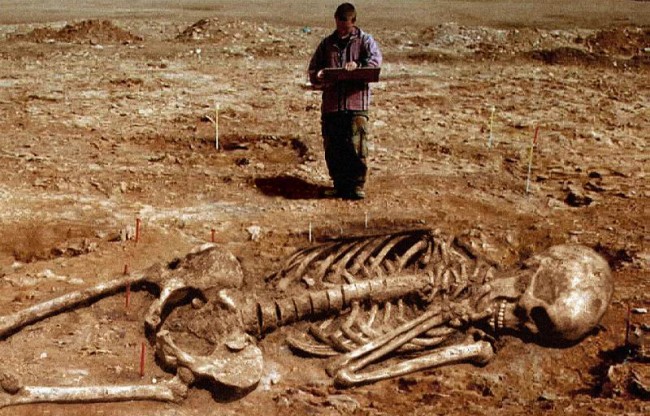
In May 1912, 18 giant human skeletons were found in burial grounds next to Lake Delavan, Wisconsin. The excavation site was supervised by Beloit College. The allegedly massive size of the skeletons and lengthened skulls did not fit into any scientific concept that was in textbooks of the day. They were massive and not believed to be any type of normal human beings.
These findings reported on May 4, 1912, stated that these skeletons had heights which ranged from 7.6 feet up to 10 feet and the skulls were much bigger than the heads of any type of person who lived inside America today. The story also said the skulls had double rows of teeth, six toes on each foot and six fingers on each hand. It was also reported that these bones were believed to belong to beings that could have even been aliens.
Since that time, there have been at least 200 digs that claims other “giants” have been discovered. However, such finds have failed to make the news since around the 1950’s for the most part. It seems that the majority of people just do not believe in this type of thing, because it sounds like complete nonsense. However photographs have been taken to record the finds as the picture with this article shows.
In 2002, National Geographic did a report on 12 skeletons that were supposedly discovered in Greece. They were measured at heights between 12 to 15 feet tall.
In August of 1891, it was reported that scientists from the Smithsonian Institution had found numerous pyramids shaped burial mounds near Madison, Wisconsin. The excavators discovered an elaborate old time fort which they called Aztalan. Around it, they discovered the skeleton of a man who was called a “giant”. The bones were said to allegedly measure over nine feet long and were well preserved. There have also been enormous size skeletons and skulls of a race of giants which have been discovered on a very steady basis all over the Midwestern states for over 100 years. The huge skeletons have been discovered in Iowa, Indiana, Minnesota, Ohio, Illinois, New York and Kentucky.
These findings reported on May 4, 1912, stated that these skeletons had heights which ranged from 7.6 feet up to 10 feet and the skulls were much bigger than the heads of any type of person who lived inside America today. The story also said the skulls had double rows of teeth, six toes on each foot and six fingers on each hand. It was also reported that these bones were believed to belong to beings that could have even been aliens.
Since that time, there have been at least 200 digs that claims other “giants” have been discovered. However, such finds have failed to make the news since around the 1950’s for the most part. It seems that the majority of people just do not believe in this type of thing, because it sounds like complete nonsense. However photographs have been taken to record the finds as the picture with this article shows.
In 2002, National Geographic did a report on 12 skeletons that were supposedly discovered in Greece. They were measured at heights between 12 to 15 feet tall.
In August of 1891, it was reported that scientists from the Smithsonian Institution had found numerous pyramids shaped burial mounds near Madison, Wisconsin. The excavators discovered an elaborate old time fort which they called Aztalan. Around it, they discovered the skeleton of a man who was called a “giant”. The bones were said to allegedly measure over nine feet long and were well preserved. There have also been enormous size skeletons and skulls of a race of giants which have been discovered on a very steady basis all over the Midwestern states for over 100 years. The huge skeletons have been discovered in Iowa, Indiana, Minnesota, Ohio, Illinois, New York and Kentucky.
In 2015, a 5-meter tall human skeleton unearthed in Alice Spring in Australia. The gigantic hominid specimen that measures an incredible 5.3 meter tall (17 foot and 4 inches) was discovered near the ancient ruins of the only megalithic civilization ever discovered in Australia according to professor Hans Zimmer of the University of Adelaide. The analysis of geological deposits confirm a large impact in the region between 3,500 and 2,500 years ago. Click here for more details.
The discovery of a 5-meter tall human skeleton near Ayers rock is the largest skeleton ever found and leaves scientists with “more questions than answers” concedes Hans Zimmer, professor of Archeology at the University of Adelaide
Please click here for more detail information about the giants. There is another documentary about giants here.
2. Noah's Ark & Flood Story
The Bible tells us that the level of sin and corruption amongst the human population was staggering during Noah's time. People thought about doing evil “all the time.” Also, as mentioned above about the giants produced by unholy union between fallen angels and humans really grieved God's heart.
Genesis 6:5-8 And God saw that the wickedness of man was great in the earth, and that every imagination of the thoughts of his heart was only evil continually. 6 And it repented the Lord that he had made man on the earth, and it grieved him at his heart.
7 And the Lord said, I will destroy man whom I have created from the face of the earth; both man, and beast, and the creeping thing, and the fowls of the air; for it repenteth me that I have made them. 8 But Noah found grace in the eyes of the Lord.
The Bible tells us that Noah's Ark landed on Mount Ararrat which is in Turkey today. Genesis 8:4 And the ark rested in the seventh month, on the seventeenth day of the month, upon the mountains of Ararat.
There has been many people searching for Noah's Ark since 1366 till 1990s. During the World War 2, some pilots even used the oval shaped patch seen from the airplane as a landmark for directions. Although some findings were not successful in providing evidences, some managed to do extensive work and claimed that Noah's Ark has been found. You can view one of the claims in the video below based on dimensions and design. Spots of high concentration of metal elements were detected with modern equipment showed a certain boat pattern suggested that the ark was built in an orderly manner. Carbon dating of the samples showed wood content dated as far back as 4800 BC from various expedition teams. Hence, it cannot be a natural coincidence.
The Bible tells us that the level of sin and corruption amongst the human population was staggering during Noah's time. People thought about doing evil “all the time.” Also, as mentioned above about the giants produced by unholy union between fallen angels and humans really grieved God's heart.
Genesis 6:5-8 And God saw that the wickedness of man was great in the earth, and that every imagination of the thoughts of his heart was only evil continually. 6 And it repented the Lord that he had made man on the earth, and it grieved him at his heart.
7 And the Lord said, I will destroy man whom I have created from the face of the earth; both man, and beast, and the creeping thing, and the fowls of the air; for it repenteth me that I have made them. 8 But Noah found grace in the eyes of the Lord.
The Bible tells us that Noah's Ark landed on Mount Ararrat which is in Turkey today. Genesis 8:4 And the ark rested in the seventh month, on the seventeenth day of the month, upon the mountains of Ararat.
There has been many people searching for Noah's Ark since 1366 till 1990s. During the World War 2, some pilots even used the oval shaped patch seen from the airplane as a landmark for directions. Although some findings were not successful in providing evidences, some managed to do extensive work and claimed that Noah's Ark has been found. You can view one of the claims in the video below based on dimensions and design. Spots of high concentration of metal elements were detected with modern equipment showed a certain boat pattern suggested that the ark was built in an orderly manner. Carbon dating of the samples showed wood content dated as far back as 4800 BC from various expedition teams. Hence, it cannot be a natural coincidence.
Another interesting thing is many civilizations around the world recorded this incident of flood in their history via records, carvings, songs or languages. For examples:
- Ancient Near East (e.g. Sumerian creation myth, Babylonian Gilgamesh/Nimrod flood myth)
- Ancient Greek flood myths
- Medieval Europe (e.g. Irish Lebor Gabála Érenn – Cessair, Norse Bergelmir)
- Finnish flood myth
- Africa (many African cultures have an oral tradition of a flood myth including the Kwaya, Mbuti, Maasai, Mandin, and Yoruba people.
- China (e.g. Nuwa Great Flood)
- Korea (Mokdoryung)
- Ancient Near East (e.g. Sumerian creation myth, Babylonian Gilgamesh/Nimrod flood myth)
- Ancient Greek flood myths
- Medieval Europe (e.g. Irish Lebor Gabála Érenn – Cessair, Norse Bergelmir)
- Finnish flood myth
- Africa (many African cultures have an oral tradition of a flood myth including the Kwaya, Mbuti, Maasai, Mandin, and Yoruba people.
- China (e.g. Nuwa Great Flood)
- Korea (Mokdoryung)
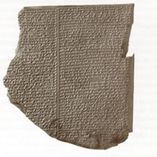
The Babylonian Flood Story is told on the 11th tablet of the Gilgamesh Epic, almost 200 lines of poetry on 12 clay tablets inscribed in cuneiform script. A number of different versions of the Gilgamesh Epic have been found around the ancient Near East, most dating to the seventh century BC. The most complete version came from the library of Ashurbanipal at Nineveh. Commentators agree that the story comes from a much earlier period, not too long after the Flood as described in the story.
In the far east like China, there is a tribe, The Miao people, claims to have descended from Japheth, one of the sons of Noah, whose descendants migrated to India and Europe. In this case some found their way into China prior to the ethnic Chinese which today constitute 92% of the population. In any event, all people of the earth presumably migrated from Sumeria due to some religion/historical event "Tower of Babel" of which the book of Genesis speaks. They had no written language till 1957, so oral history and tradition was passed on by song and dance. We find in their tradition the story of Creation, Man's Revolt, the Flood, Babel and Biblical genealogy. The "Fall" is not mentioned in this account.
Also, the word “Japheth” means “Enlargement” and it signifies in a prophetic sense that Japheth’s progeny would become an enlarged population on earth. They would become the most populous people, having many more descendants than Ham or Shem. And without doubt, the people of China and their neighbors who are a part of what we generally call the Yellow Races are the most populous of the nations on earth. This meaning of Japheth’s name is the first evidence that the patriarch Japheth and his descendants describe the patriarchal origin of the Chinese people. Below are the Creation Song and Flood Story Song from the Miao people passed down for generations till today.
|
CREATION STORY ACCORDING TO MIAO ZU SONG
On the day God created the heavens and earth. On that day He opened the gateway of light. In the earth then He made heaps of earth and of stone. In the sky He made bodies, the sun and the moon. In the earth He created the hawk and the kite. In the water created the lobster and fish. In the wilderness made He the tiger and bear, Made verdure to cover the mountains, Made forest extend with the ranges, Made the light green cane, Made the rank bamboo. On earth He created a man from the dirt. Of the man thus created, a woman He formed .... These [mankind] did not God's will nor return His affection. But fought with each other defying the Godhead. .... |
FLOOD STORY ACCORDING TO MIAO ZU SONG
So it poured forty days in sheets and in torrents. Then fifty-five days of misting and drizzle. The waters surmounted the mountains and ranges. The deluge ascending leaped valley and hollow. An earth with no earth upon which to take refuge! A world with no foothold where one might subsist! The people were baffled, impotent and ruined, Despairing, horror stricken, diminished and finished. But the Patriarch Nuah was righteous. The Matriarch Gaw Bo-lu-en upright. Built a boat very wide. Made a ship very vast. Their household entire got aboard and were floated, The family complete rode the deluge in safety. The animals with him were female and male. The birds went along and were mated in pairs. When the time was fulfilled, God commanded the waters. The day had arrived, the flood waters receded. Then Nuah liberated a dove from their refuge, Sent a bird to go forth and bring again tidings. The flood had gone down into lake and to ocean; The mud was confined to the pools and the hollows. There was land once again where a man might reside; There was a place in the earth now to rear habitations. Buffalo then were brought, an oblation to God, Fatter cattle became sacrifice to the Mighty. The Divine One then gave them His blessing; Their God then bestowed His good graces. |
Another interesting discovery is the Chinese language. The Chinese language is one of the oldest known written languages. The earliest records of Chinese (written on bones and shells) date back to over 4,000 years old. The Chinese people use a logographic system (a series of symbols that represent a complete word or phrase) of writing, which has changed little over the centuries. It is a pictorial language and some scholars have discovered some biblical stories embedded in this pictorial language. For instance,
|
A boat or ship in Chinese language is a combination of 8 people in a vessel. This comes from Noah & his family in the boat or Ark. Noah & his family were altogether 8 people. Genesis 7:13 In the selfsame day entered Noah, and Shem, and Ham, and Japheth, the sons of Noah, and Noah's wife, and the three wives of his sons with them, into the ark.
|
Going back to Garden of Eden, Genesis tells us:
And the Lord God commanded the man, saying, Of every tree of the garden thou mayest freely eat:
But of the tree of the knowledge of good and evil, thou shalt not eat of it: for in the day that thou eatest thereof thou shalt surely die. (Genesis 2:16-17, KJV)
Scholars discovered the following in the chinese language below. For more examples, click here.
And the Lord God commanded the man, saying, Of every tree of the garden thou mayest freely eat:
But of the tree of the knowledge of good and evil, thou shalt not eat of it: for in the day that thou eatest thereof thou shalt surely die. (Genesis 2:16-17, KJV)
Scholars discovered the following in the chinese language below. For more examples, click here.
|
Jìn is a Chinese word for FORBIDDEN. It pictures a COMMAND about the FOREST of trees which was in the garden. As mentioned above, the Bible addresses two specific trees found in the garden of Eden. The character for forest literally pictures TWO TREES. The tree of life, which was set apart from the rest of the forest was available to them, but of the tree of the knowledge of good and evil, God specifically commanded that they should not eat from it.
|
|
The ancient Chinese recorded Adam's HAPPINESS in the word fú. It depicts the close relationship he shared with his Creator, as it shows GOD and the ONE MAN in the GARDEN. Adam enjoyed fellowship with God in a way that no other man has - sin had not yet entered the world. Another word for happiness will come later in our study, but instead of showing man and God together in the garden, it will reveal the need for a sin sacrifice in order to restore man's fellowship with God.
|
|
|
|
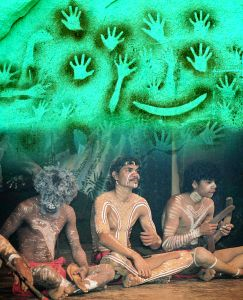
Another civilization with a flood story that could be traced back to Noah is the Australian Aborigines. The striking Flood accounts, summarized here, was discovered by anthropologists among a remote Aboriginal tribe in Western Australia, before any contact with missionaries.
“It came about that the earliest-time children tormented and ill-treated the Winking Owl, Dumbi. Ngadja, the Supreme One, was inwardly grieved and felt deep sorrow for him. He instructed Gajara, ‘If you want to live, take your wife, your sons and your sons’ wives and get a double raft. Because of the Dumbi affair, I intend to drown everyone. I am about to send rain and a sea flood,’ he told them. ‘Put on the raft long-lasting foods that may be stored, foods such as gumi, banimba, and ngalindaja, all these ground foods.’
“So Gajara stored all these foods. He also gathered birds of the air such as the cuckoo, the mistletoe-eater, the rainbow bird, the helmeted friar bird and finches; these he took on the raft, and also a female kangaroo. Gajara gathered his sons as the crew, and his own wife and his sons’ wives together.
“Then Ngadja sent the rainclouds down, shutting the clouds in upon them. The sea-flood came in from the north-north-east and the people were closed in by the salt-water flood and the tidal waters of the sea. Ngadja whirled the flood waters and the earth opened, drowning and flattening them all. He finished them at Dumbey. Meanwhile, the flood carried all those who were on the raft with Gajara along on the current far away to Dulugun.
“At last, the floodwaters brought Gajara back in this direction. He sent some birds out from the raft, first the cuckoo. The cuckoo found the land and did not return to him. Gradually the waters were going down. Later on, the other birds returned to Gajara and he sent them out again the following day. The land was already drying the waters up and the living creatures found a home and food. They killed a kangaroo after landing, and Gajara’s wife, Galgalbiri, put it in the earth oven and cooked it with other foods. The smoke rose slowly until it reached through into the sky. Ngadja, the Supreme Being, could smell the steam and smoke rising from the female kangaroo as it was cooking and he was pleased.
“Ngadja, the Supreme Being, put the rainbow in the sky to keep the rain-clouds back. The rainbow protects us so that the rainfall does not rise too high. Our people understand the significance of it. When we see the rainbow we say, ‘There will not be any abnormally heavy rain.’ Genesis 9:12-16 (NIV) And God said, “This is the sign of the covenant I am making between me and you and every living creature with you, a covenant for all generations to come: I have set my rainbow in the clouds, and it will be the sign of the covenant between me and the earth. Whenever I bring clouds over the earth and the rainbow appears in the clouds, I will remember my covenant between me and you and all living creatures of every kind. Never again will the waters become a flood to destroy all life. Whenever the rainbow appears in the clouds, I will see it and remember the everlasting covenant between God and all living creatures of every kind on the earth.”
“It came about that the earliest-time children tormented and ill-treated the Winking Owl, Dumbi. Ngadja, the Supreme One, was inwardly grieved and felt deep sorrow for him. He instructed Gajara, ‘If you want to live, take your wife, your sons and your sons’ wives and get a double raft. Because of the Dumbi affair, I intend to drown everyone. I am about to send rain and a sea flood,’ he told them. ‘Put on the raft long-lasting foods that may be stored, foods such as gumi, banimba, and ngalindaja, all these ground foods.’
“So Gajara stored all these foods. He also gathered birds of the air such as the cuckoo, the mistletoe-eater, the rainbow bird, the helmeted friar bird and finches; these he took on the raft, and also a female kangaroo. Gajara gathered his sons as the crew, and his own wife and his sons’ wives together.
“Then Ngadja sent the rainclouds down, shutting the clouds in upon them. The sea-flood came in from the north-north-east and the people were closed in by the salt-water flood and the tidal waters of the sea. Ngadja whirled the flood waters and the earth opened, drowning and flattening them all. He finished them at Dumbey. Meanwhile, the flood carried all those who were on the raft with Gajara along on the current far away to Dulugun.
“At last, the floodwaters brought Gajara back in this direction. He sent some birds out from the raft, first the cuckoo. The cuckoo found the land and did not return to him. Gradually the waters were going down. Later on, the other birds returned to Gajara and he sent them out again the following day. The land was already drying the waters up and the living creatures found a home and food. They killed a kangaroo after landing, and Gajara’s wife, Galgalbiri, put it in the earth oven and cooked it with other foods. The smoke rose slowly until it reached through into the sky. Ngadja, the Supreme Being, could smell the steam and smoke rising from the female kangaroo as it was cooking and he was pleased.
“Ngadja, the Supreme Being, put the rainbow in the sky to keep the rain-clouds back. The rainbow protects us so that the rainfall does not rise too high. Our people understand the significance of it. When we see the rainbow we say, ‘There will not be any abnormally heavy rain.’ Genesis 9:12-16 (NIV) And God said, “This is the sign of the covenant I am making between me and you and every living creature with you, a covenant for all generations to come: I have set my rainbow in the clouds, and it will be the sign of the covenant between me and the earth. Whenever I bring clouds over the earth and the rainbow appears in the clouds, I will remember my covenant between me and you and all living creatures of every kind. Never again will the waters become a flood to destroy all life. Whenever the rainbow appears in the clouds, I will see it and remember the everlasting covenant between God and all living creatures of every kind on the earth.”
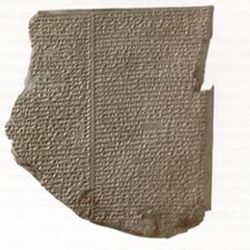
3. Nimrod (Leader of Tower of Babel)
As we all know, Nimrod was the leader leading the revolution against God during Tower of Babel incident about 2500 BC (about 4500 years ago). Nimrod was the great grandson of Noah or grandson of Ham. He was also known as a giant where a statue of him having a lion as a pet like a cat to us today. The Bible tells us that Nimrod was a great hunter. The incident of Tower of Babel caused all of the people speaking different languages overnight. The Book of Jasher gave us some details and insight into how all that happened.
The evidence of Nimrod can be found in the Epic of Gilgamesh and his tomb called Osiris Tomb. What or who is Gilgamesh?
The Epic of Gilgamesh is an epic poem from ancient Mesopotamia. Dating from the Third Dynasty of Ur (circa 2100 BC), it is often regarded as the earliest surviving great work of literature. The Epic of Gilgamesh was first discovered by Hormuzd Rassam in 1853 but was translated by George Smith in early 1870s.
The literary history of Gilgamesh begins with five Sumerian poems about 'Bilgamesh' (Sumerian for 'Gilgamesh'), king of Uruk. Note that Uruk is now Iraq. These independent stories were later used as source material for a combined epic. The first surviving version of this combined epic, known as the "Old Babylonian" version, dates to the 18th century BC and is titled after its incipit, Shūtur eli sharrī ("Surpassing All Other Kings"). Only a few tablets of it have survived.
David Livingston does a good job of making the Nimrod-Gilgamesh connection. Gilgamesh is often depicted as a giant. We can see in the picture below that he is holding a lion under his arm! The ancient text also makes the statement that he was "2/3 god and 1/3 man" and 11 cubits tall (about 5 meter). This would certainly seem to support the "Nephilim genetics" in the children of Ham.
A German-led expedition has discovered what is thought to be the entire city of Uruk - including, where the Euphrates once flowed, the last resting place of its famous King. "I don't want to say definitely it was the grave of King Gilgamesh, but it looks very similar to that described in the epic," Jorg Fassbinder, of the Bavarian department of Historical Monuments in Munich, told the BBC World Service's Science in Action programme.
We have the tablets about him that matches The Bible and a Tomb to show Nimrod existed in around 2100 BC.
As we all know, Nimrod was the leader leading the revolution against God during Tower of Babel incident about 2500 BC (about 4500 years ago). Nimrod was the great grandson of Noah or grandson of Ham. He was also known as a giant where a statue of him having a lion as a pet like a cat to us today. The Bible tells us that Nimrod was a great hunter. The incident of Tower of Babel caused all of the people speaking different languages overnight. The Book of Jasher gave us some details and insight into how all that happened.
The evidence of Nimrod can be found in the Epic of Gilgamesh and his tomb called Osiris Tomb. What or who is Gilgamesh?
The Epic of Gilgamesh is an epic poem from ancient Mesopotamia. Dating from the Third Dynasty of Ur (circa 2100 BC), it is often regarded as the earliest surviving great work of literature. The Epic of Gilgamesh was first discovered by Hormuzd Rassam in 1853 but was translated by George Smith in early 1870s.
The literary history of Gilgamesh begins with five Sumerian poems about 'Bilgamesh' (Sumerian for 'Gilgamesh'), king of Uruk. Note that Uruk is now Iraq. These independent stories were later used as source material for a combined epic. The first surviving version of this combined epic, known as the "Old Babylonian" version, dates to the 18th century BC and is titled after its incipit, Shūtur eli sharrī ("Surpassing All Other Kings"). Only a few tablets of it have survived.
David Livingston does a good job of making the Nimrod-Gilgamesh connection. Gilgamesh is often depicted as a giant. We can see in the picture below that he is holding a lion under his arm! The ancient text also makes the statement that he was "2/3 god and 1/3 man" and 11 cubits tall (about 5 meter). This would certainly seem to support the "Nephilim genetics" in the children of Ham.
A German-led expedition has discovered what is thought to be the entire city of Uruk - including, where the Euphrates once flowed, the last resting place of its famous King. "I don't want to say definitely it was the grave of King Gilgamesh, but it looks very similar to that described in the epic," Jorg Fassbinder, of the Bavarian department of Historical Monuments in Munich, told the BBC World Service's Science in Action programme.
We have the tablets about him that matches The Bible and a Tomb to show Nimrod existed in around 2100 BC.
Another interesting comparison is Nimrod as described in The Bible to Sargon the Great. Sargon was an Akkadian King reigned around 2334 BC – 2279 BC and died around 2215 BC.
There is discussion among Assyriologists over whether or not the name Sargon was given at birth or a regnal name adopted later in life, given its directly relevant meaning. Ewing William (1910) suggested Sargon based on his unification of the Babylonians and the Neo-Assyrian birth legend. Yigal Levin (2002) suggested that Nimrod was a recollection of Sargon and of his grandson Naram-Sin, with the name "Nimrod" derived from the latter. For those interested in the Mesopotamian history, click here.
There is discussion among Assyriologists over whether or not the name Sargon was given at birth or a regnal name adopted later in life, given its directly relevant meaning. Ewing William (1910) suggested Sargon based on his unification of the Babylonians and the Neo-Assyrian birth legend. Yigal Levin (2002) suggested that Nimrod was a recollection of Sargon and of his grandson Naram-Sin, with the name "Nimrod" derived from the latter. For those interested in the Mesopotamian history, click here.
4. Abraham, Isaac and Jacob burial sites
The next interesting archeological evidence of The Bible is the burial sites of Abraham, Isaac and Jacob. The reference of this burial sites are mostly in Genesis chapter 49 to 50 although earlier chapters in 23 and 25 also informed us of Abraham and Sarah burial site.
Genesis 49:30-31 In the cave that is in the field of Machpelah, which is before Mamre, in the land of Canaan, which Abraham bought with the field of Ephron the Hittite for a possession of a burying place. There they buried Abraham and Sarah his wife; there they buried Isaac and Rebekah his wife; and there I buried Leah.
The Cave of Machpelah is the world's most ancient Jewish site and the second holiest place for the Jewish people, after Temple Mount in Jerusalem. The cave and the adjoining field were purchased—at full market price—by Abraham some 3700 years ago. Abraham, Isaac, Jacob, Sarah, Rebecca, and Leah are all later buried in the same Cave of Machpelah. These are considered the patriarchs and matriarchs of the Jewish people. The only one who is missing is Rachel, who was buried near Bethlehem where she died in childbirth.
The double cave, a mystery of thousands of years, was uncovered several years ago beneath the massive building, revealing artifacts from the Early Israelite Period (some 30 centuries ago). The structure was built during the Second Temple Period (about two thousand years ago) by Herod, King of Judea, providing a place for gatherings and Jewish prayers at the graves of the Patriarchs.
This uniquely impressive building is the only one that stands intact and still fulfills its original function after thousands of years. Foreign conquerors and invaders used the site for their own purposes, depending on their religious orientation: the Byzantines and Crusaders transformed it into a church and the Muslims rendered it a mosque. About 700 years ago, the Muslim Mamelukes conquered Hebron, declared the structure a mosque and forbade entry to Jews, who were not allowed past the seventh step on a staircase outside the building.
Upon the liberation of Hebron in 1967, the Chief Rabbi of the Israel Defense Forces, the late Major-General Rabbi Shlomo Goren, was the first Jew to enter the Cave of Machpelah. Since then, Jews have been struggling to regain their prayer rights at the site, still run by the Muslim Waqf (Religious Trust) that took control during the Arab conquest. Many restrictions are imposed on Jewish prayers and customs at the Tomb of the Patriarchs despite the site's significance, primacy and sanctity in Jewish heritage and history.
Over 300,000 people visit Ma'arat HaMachpelah annually. The structure is divided into three rooms: Ohel Avraham, Ohel Yitzhak, and Ohel Ya'akov. Presently Jews have no access to Ohel Yitzhak, the largest room, with the exception of 10 days a year.
The next interesting archeological evidence of The Bible is the burial sites of Abraham, Isaac and Jacob. The reference of this burial sites are mostly in Genesis chapter 49 to 50 although earlier chapters in 23 and 25 also informed us of Abraham and Sarah burial site.
Genesis 49:30-31 In the cave that is in the field of Machpelah, which is before Mamre, in the land of Canaan, which Abraham bought with the field of Ephron the Hittite for a possession of a burying place. There they buried Abraham and Sarah his wife; there they buried Isaac and Rebekah his wife; and there I buried Leah.
The Cave of Machpelah is the world's most ancient Jewish site and the second holiest place for the Jewish people, after Temple Mount in Jerusalem. The cave and the adjoining field were purchased—at full market price—by Abraham some 3700 years ago. Abraham, Isaac, Jacob, Sarah, Rebecca, and Leah are all later buried in the same Cave of Machpelah. These are considered the patriarchs and matriarchs of the Jewish people. The only one who is missing is Rachel, who was buried near Bethlehem where she died in childbirth.
The double cave, a mystery of thousands of years, was uncovered several years ago beneath the massive building, revealing artifacts from the Early Israelite Period (some 30 centuries ago). The structure was built during the Second Temple Period (about two thousand years ago) by Herod, King of Judea, providing a place for gatherings and Jewish prayers at the graves of the Patriarchs.
This uniquely impressive building is the only one that stands intact and still fulfills its original function after thousands of years. Foreign conquerors and invaders used the site for their own purposes, depending on their religious orientation: the Byzantines and Crusaders transformed it into a church and the Muslims rendered it a mosque. About 700 years ago, the Muslim Mamelukes conquered Hebron, declared the structure a mosque and forbade entry to Jews, who were not allowed past the seventh step on a staircase outside the building.
Upon the liberation of Hebron in 1967, the Chief Rabbi of the Israel Defense Forces, the late Major-General Rabbi Shlomo Goren, was the first Jew to enter the Cave of Machpelah. Since then, Jews have been struggling to regain their prayer rights at the site, still run by the Muslim Waqf (Religious Trust) that took control during the Arab conquest. Many restrictions are imposed on Jewish prayers and customs at the Tomb of the Patriarchs despite the site's significance, primacy and sanctity in Jewish heritage and history.
Over 300,000 people visit Ma'arat HaMachpelah annually. The structure is divided into three rooms: Ohel Avraham, Ohel Yitzhak, and Ohel Ya'akov. Presently Jews have no access to Ohel Yitzhak, the largest room, with the exception of 10 days a year.
5. Exodus from Egypt
The Bible account of the 10 plagues and finally the Exodus of Jews from Egypt informed us how the whole incident happened. 400 years after these incidences, King Solomon erected two monuments (one on Nuweiba Beach in Egypt and another on Saudi side) to celebrate the miracle of the crossing of the Red Sea on dry land. King Solomon's sea port was at the northern tip of the Gulf of Aqaba at Eilat (I Kings 9:26) and he was very familiar with the Red Sea crossing site, as it was in his neighborhood. The Bible even mentions this column! Isaiah 19:19, "In that day there will be an altar to the Lord in the midst of the land of Egypt, and a pillar to the Lord at its border." You can visit the beach today and see the column in person.
The Bible account of the 10 plagues and finally the Exodus of Jews from Egypt informed us how the whole incident happened. 400 years after these incidences, King Solomon erected two monuments (one on Nuweiba Beach in Egypt and another on Saudi side) to celebrate the miracle of the crossing of the Red Sea on dry land. King Solomon's sea port was at the northern tip of the Gulf of Aqaba at Eilat (I Kings 9:26) and he was very familiar with the Red Sea crossing site, as it was in his neighborhood. The Bible even mentions this column! Isaiah 19:19, "In that day there will be an altar to the Lord in the midst of the land of Egypt, and a pillar to the Lord at its border." You can visit the beach today and see the column in person.
This monument was discovered by Ronn Wyatt in 1978. A pair of pillars on the Egyptian side (Nuweiba) and the Saudi side of the the Gulf of Aqaba - The Red Sea. The one on the Egyptian side had fallen over and was in the sea. It's inscriptions had worn off. The one on the Saudi side was inscribed with the words: Yahweh, Pharaoh, Mizraim, Moses, Death, Water, Solomon, Edom. The Saudi pillar has been removed by the Saudi's but the one on the Nuweiba side is still standing and can be visited. Wyatt also found 4, 6 and 8 spoked chariot wheels covered with coral strewn across the bottom of the Red Sea at this point.
Please note that the location of Israelites Red Sea crossing during Exodus remains a mystery till today. It could be King Solomon also built the Monument on incorrect location especially 480 years after Exodus. The more popular accepted route and crossing of the Red Sea is via Straits of Tiran . Nevertheless, Israelites crossing of Red Sea happened around 1446 BC (about 3464 years ago).
Please note that the location of Israelites Red Sea crossing during Exodus remains a mystery till today. It could be King Solomon also built the Monument on incorrect location especially 480 years after Exodus. The more popular accepted route and crossing of the Red Sea is via Straits of Tiran . Nevertheless, Israelites crossing of Red Sea happened around 1446 BC (about 3464 years ago).
Most people who wanted to see Mount Sinai are often taken to Mount Sinai in Egypt where they see St. Catherine's Monestary. However, most who tried to match it to the biblical account will often come into conclusion that they are in the wrong Mount Sinai. The video below (about 25 mins) shows the discovery of possible actual Mount Sinai in Saudi Arabia by a small family. There are also others who have gone there to verify the place. A Korean named Dr Kim was also there when he was a personal physician to a Saudi King.
The next portion of Exodus to explore is about the 10 Plagues. The formal royal Egyptians documents often do not record any defeat or failures of their Pharoahs. However, we know there is a record by a normal Egyptian civilian named Ipuwer that wrote this account which is called The Ipuwer Papyrus (officially Papyrus Leiden I 344 recto). The Ipuwer Papyrus is an ancient Egyptian hieratic papyrus made during the Nineteenth Dynasty of Egypt, and now held in the Dutch National Museum of Antiquities in Leiden, Netherlands. Let us now compare the notes of Ipuwer Papyrus versus Torah (which is the first 5 books of The Old Testament in The Bible)
|
PUWER PAPYRUS - LEIDEN 344
2:5-6 Plague is throughout the land. Blood is everywhere. 2:10 The river is blood. 2:10 Men shrink from tasting - human beings, and thirst after water 3:10-13 That is our water! That is our happiness! What shall we do in respect thereof? All is ruin. 2:10 Forsooth, gates, columns and walls are consumed by fire.
10:3-6 Lower Egypt weeps... The entire palace is without its revenues. To it belong [by right] wheat and barley, geese and fish 6:3 Forsooth, grain has perished on every side. 5:12 Forsooth, that has perished which was yesterday seen. The land is left over to its weariness like the cutting of flax. 5:5 All animals, their hearts weep. Cattle moan...
9:2-3 Behold, cattle are left to stray, and there is none to gather them together. 9:11 The land is without light
4:3 (5:6) Forsooth, the children of princes are dashed against the walls.
6:12 Forsooth, the children of princes are cast out in the streets. 6:3 The prison is ruined. 2:13 He who places his brother in the ground is everywhere. 3:14 It is groaning throughout the land, mingled with lamentations 7:1 Behold, the fire has mounted up on high. Its burning goes forth against the enemies of the land.
3:2 Gold and lapis lazuli, silver and malachite, carnelian and bronze... are fastened on the neck of female slaves.
|
TORAH - EXODUS
7:20 …all the waters of the river were turned to blood. 7:21 ...there was blood thoughout all the land of Egypt …and the river stank. 7:24 And all the Egyptians dug around the river for water to drink; for they could not drink of the water of the river. 9:23-24 ...and the fire ran along the ground... there was hail, and fire mingled with the hail, very grievous.
9:25 ...and the hail smote every herb of the field, and broke every tree of the field. 9:31-32 ...and the flax and the barley was smitten; for the barley was in season, and flax was ripe. But the wheat and the rye were not smitten; for they were not grown up. 10:15 ...there remained no green things in the trees, or in the herbs of the fields, through all the land of Egypt. 9:3 ...the hand of the Lord is upon thy cattle which is in the field... and there shall be a very grievous sickness.
9:19 ...gather thy cattle, and all that thou hast in the field... 9:21 And he that did not fear the word of the Lord left his servants and cattle in the field. 10:22 And there was a thick darkness in all the land of Egypt.
12:29 And it came to pass, that at midnight the Lord smote all the firstborn in the land of Egypt, from the firstborn of Pharaoh that sat on his throne to the firstborn of the captive that was in the prison.
12:30 ...there was not a house where there was not one dead. 12:30 ...there was a great cry in Egypt. 13:21 ... by day in a pillar of cloud, to lead them the way; and by night in a pillar of fire, to give them light; to go by day and night.
12:35-36 ...and they requested from the Egyptians, silver and gold articles and clothing. And God made the Egyptians favour them and they granted their request. [The Israelites] thus drained Egypt of its wealth.
|
5.1 Egyptian Pharoah's Daughter who adopted Moses
Let us now look at the possible Egyptian Dynasty that could be around the time of Moses.
Many references stated that Exodus happened in 1446 BC. In the works of Josephus, the princess who saved Moses from the Nile is called Thermuthis. We know that Pharaoh daughter Hatshepsut from royal blood that was born in around 1507 BC could be the one. She married her half brother Tuthmosis II. Hatshepsut was an ambitious and capable woman. She ruled with her husband Tuthmosis II till he died in 1479 BC. After that, she continued to rule because Tuthmosis III was too young (who was born in 1481 BC from Tuthmosis II non-royal wife). Please note that Hatshepsut did not have any son from Tuthmosis II which makes it more compelling for her to groom Moses into the role. When Tuthmosis III was born, Tuthmosis II would probably wanted to get rid of Moses. Moses was probably born in 1526 BC which made him about 45 years older than Tuthmosis III.
Let us now look at the possible Egyptian Dynasty that could be around the time of Moses.
Many references stated that Exodus happened in 1446 BC. In the works of Josephus, the princess who saved Moses from the Nile is called Thermuthis. We know that Pharaoh daughter Hatshepsut from royal blood that was born in around 1507 BC could be the one. She married her half brother Tuthmosis II. Hatshepsut was an ambitious and capable woman. She ruled with her husband Tuthmosis II till he died in 1479 BC. After that, she continued to rule because Tuthmosis III was too young (who was born in 1481 BC from Tuthmosis II non-royal wife). Please note that Hatshepsut did not have any son from Tuthmosis II which makes it more compelling for her to groom Moses into the role. When Tuthmosis III was born, Tuthmosis II would probably wanted to get rid of Moses. Moses was probably born in 1526 BC which made him about 45 years older than Tuthmosis III.
5.2 Egyptian Pharoah during Exodus
Pharaoh who killed Hebrew children: Amunhotep I: 1532-1511 BC
Pharaoh's Daughter who adopted Moses: Hatshepsut: 1526 BC
Pharaoh of Moses' flight to Midian: Thutmose II/Hatshepsut: 1498-1485 BC
Pharaoh of the Exodus: Thutmose III: 1485/1464 - 1431 BC
If the year of Exodus was 1446 BC, then Tuthmosis III or Thutmose II could be the pharoah that had to let the Israelites go. Click here for detail analysis.
Pharaoh who killed Hebrew children: Amunhotep I: 1532-1511 BC
Pharaoh's Daughter who adopted Moses: Hatshepsut: 1526 BC
Pharaoh of Moses' flight to Midian: Thutmose II/Hatshepsut: 1498-1485 BC
Pharaoh of the Exodus: Thutmose III: 1485/1464 - 1431 BC
If the year of Exodus was 1446 BC, then Tuthmosis III or Thutmose II could be the pharoah that had to let the Israelites go. Click here for detail analysis.
6. King David
Two archaeological finds, the Tel Dan Stele and the Mesha Stele, have direct bearing on the question of the existence of a historical David. The first of these is an Aramean victory stele (a freestanding, inscribed stone) discovered in 1993 at Tel Dan and dated c. 850–835 BCE: it contains the phrase ביתדוד (bytdwd), which is very frequently interpreted as "House of David".[24] The Mesha Stele from Moab, dating from approximately the same period, may also contain the name David in two places: in line 12, where the interpretation is debatable due to unusual syntax (perhaps Anson Rainey's translation, "its Davidic altar-hearth"), and in line 31, where one destroyed letter must be supplied. Since apparently no other letter in line 31 produces a word that makes sense in the context, "house of David" seems to be the likely translation.
The evidence from surface surveys indicates that Judah at the time of David was a small tribal kingdom. The Bronze and Iron Age remains of the City of David, the original urban core of Jerusalem identified with the reigns of David and Solomon, were investigated extensively in the 1970s and 1980s under the direction of Yigal Shiloh of the Hebrew University, who failed to discover significant evidence of occupation during the 10th century BCE. In 2005 Eilat Mazar reported the discovery of a Large Stone Structure which she claimed was David's palace, but the site is contaminated and cannot be accurately dated.
In December 2014, archaeologists from Mississippi State University announced the discovery of six bullae which suggests that some type of government activity was being conducted in the 10th century, and thus support the existence of David, although the bullae do not mention David or Jerusalem or Judah or Israel and there is no way of knowing who produced them or for what purpose.
In 2015, a rare 3,000-year-old seal, from the time of King David in the 10th century BCE, was recently discovered by a 10-year-old Russian volunteer at Jerusalem’s Temple Mount Sifting Project.
Two archaeological finds, the Tel Dan Stele and the Mesha Stele, have direct bearing on the question of the existence of a historical David. The first of these is an Aramean victory stele (a freestanding, inscribed stone) discovered in 1993 at Tel Dan and dated c. 850–835 BCE: it contains the phrase ביתדוד (bytdwd), which is very frequently interpreted as "House of David".[24] The Mesha Stele from Moab, dating from approximately the same period, may also contain the name David in two places: in line 12, where the interpretation is debatable due to unusual syntax (perhaps Anson Rainey's translation, "its Davidic altar-hearth"), and in line 31, where one destroyed letter must be supplied. Since apparently no other letter in line 31 produces a word that makes sense in the context, "house of David" seems to be the likely translation.
The evidence from surface surveys indicates that Judah at the time of David was a small tribal kingdom. The Bronze and Iron Age remains of the City of David, the original urban core of Jerusalem identified with the reigns of David and Solomon, were investigated extensively in the 1970s and 1980s under the direction of Yigal Shiloh of the Hebrew University, who failed to discover significant evidence of occupation during the 10th century BCE. In 2005 Eilat Mazar reported the discovery of a Large Stone Structure which she claimed was David's palace, but the site is contaminated and cannot be accurately dated.
In December 2014, archaeologists from Mississippi State University announced the discovery of six bullae which suggests that some type of government activity was being conducted in the 10th century, and thus support the existence of David, although the bullae do not mention David or Jerusalem or Judah or Israel and there is no way of knowing who produced them or for what purpose.
In 2015, a rare 3,000-year-old seal, from the time of King David in the 10th century BCE, was recently discovered by a 10-year-old Russian volunteer at Jerusalem’s Temple Mount Sifting Project.
7. Is the Legend True? Did Jesus Write a Letter to King Abgar?
A copy of a letter written by Abgarus the toparch to Jesus, and sent to him by means of Ananias the runner, to Jerusalem.
Abgarus Uchama the toparch to Jesus the good Saviour that hath appeared in the parts (place) of Jerusalem, greeting. I have heard concerning thee and thy cures, that they are done of thee without drugs or herbs: for, as the report goes, thou makest blind men to see again, lame to walk, and cleansest lepers, and castest out unclean spirits and devils, and those that are afflicted with long sickness thou healest, and raisest the dead.
And having heard all this of thee, I had determined one of two things, either that thou art God come down from heaven, and so doest these things or art a Son of God that doest these things.
Therefore now have I written and entreated thee to trouble thyself to come to me and heal the affliction which I have. or indeed I have heard that the Jews even murmur against thee and wish to do thee hurt. And I have a very little city but (and) comely (reverend), which is sufficient for us both.
The answer, written by Jesus, sent by Ananias the runner to Abgarus the toparch.
Blessed art thou that hast believed in me, not having seen me.
For it is written concerning me that they that have seen me shall not believe in me, and that they that have not seen me shall believe and live. But concerning that which thou hast written to me, to come unto thee; it must needs be that I fulfill all things for the which I was sent here, and after fulfilling them should then be taken up unto him that sent me.
And when I am taken up, I will send thee one of my disciples, to heal thine affliction and give life to thee and them that are with thee.
A copy of a letter written by Abgarus the toparch to Jesus, and sent to him by means of Ananias the runner, to Jerusalem.
Abgarus Uchama the toparch to Jesus the good Saviour that hath appeared in the parts (place) of Jerusalem, greeting. I have heard concerning thee and thy cures, that they are done of thee without drugs or herbs: for, as the report goes, thou makest blind men to see again, lame to walk, and cleansest lepers, and castest out unclean spirits and devils, and those that are afflicted with long sickness thou healest, and raisest the dead.
And having heard all this of thee, I had determined one of two things, either that thou art God come down from heaven, and so doest these things or art a Son of God that doest these things.
Therefore now have I written and entreated thee to trouble thyself to come to me and heal the affliction which I have. or indeed I have heard that the Jews even murmur against thee and wish to do thee hurt. And I have a very little city but (and) comely (reverend), which is sufficient for us both.
The answer, written by Jesus, sent by Ananias the runner to Abgarus the toparch.
Blessed art thou that hast believed in me, not having seen me.
For it is written concerning me that they that have seen me shall not believe in me, and that they that have not seen me shall believe and live. But concerning that which thou hast written to me, to come unto thee; it must needs be that I fulfill all things for the which I was sent here, and after fulfilling them should then be taken up unto him that sent me.
And when I am taken up, I will send thee one of my disciples, to heal thine affliction and give life to thee and them that are with thee.
We know that King Abgar V existed till about 40 AD. He was a historical Arab ruler of the kingdom of Osroene, holding his capital at Edessa which is now called Sanliurfa in Turkey today.
The church historian Eusebius, Bishop of Caesarea records, that the Edessan archives contained a copy of a correspondence exchanged between Abgar of Edessa and Jesus.
The church historian Eusebius, Bishop of Caesarea records, that the Edessan archives contained a copy of a correspondence exchanged between Abgar of Edessa and Jesus.
8. Twelve Disciples of Jesus
How did the 12 disciples die?
1. Andrew = Crucified on an X-shaped cross (Patras, Achaia, Greece)
2. Bartholomew or Nathanael = Flayed alive with knives (Armenia/India)
3. James the elder = First apostle martyred (Jerusalem, Israel)
4. James the lesser = Sawn in pieces (Ostrakine, Sinai, Egypt)
5. John = Died of natural causes on the isle of Patmos (Patmos, Turkey)
6. Judas Iscariot = Hung himself (Jerusalem, Israel)
7. Jude or Thaddeus = Killed with arrows (Ararat, Turkey??)
8. Matthew or Levi = Martyred in Ethiopia (Ethiopia, Africa)
9. Peter = Crucified upside-down on a cross (Rome, Italy)
10. Philip = Died by hanging (Hierapolis, Anatolia, Roman Empire)
11. Simon the Zealot = Died a martyrs death (Persia; Edessa?)
12. Thomas = Killed with a spear (burried in Chennai, India)
8.1 Andrew
Andrew was the brother of Peter, and a son of Jonas. He lived in Bethsaida and Capernaum and was a fisherman before Jesus called him. Originally he was a disciple of John the Baptist (Mark 1:16-18). Andrew brought his brother, Peter, to Jesus (John 1:40). He is the first to have the title of Home and Foreign Missionary. He is claimed by three countries as their Patron Saint-Russia, Scotland and Greece. Many scholars say that he preached in Scythia, Greece and Asia Minor.
Andrew introduced others to Jesus. Although circumstances placed him in a position where it would have been easy for him to become jealous and resentful, he was optimistic and well content in second place. His main purpose in life was to bring others to the master.
According to tradition, it was in Achaia, Greece, in the town of Patra that Andrew died a martyr. When Governor Aepeas' wife was healed and converted to the Christian faith, and shortly after that the Governor's brother became a Christian. Aepeas was enraged. He arrested Andrew and condemned him to die on the cross. Andrew, feeling unworthy to be crucified on the same-shaped cross as his Master, begged that his be different. So, he was crucified on an X-shaped cross, which is still called Saint Andrew's cross and which is one of his apostolic symbols. A symbol of two crossed fish has also been applied to Andrew, because he was formerly a fisherman.
8.2 Bartholomew or Nathanael
Bartholomew Nathanael, son of Talmai, lived in Cana of Galilee. His apostolic symbol is three parallel knives. Tradition says he was a missionary in Armenia. A number of scholars believe that he was the only one of the 12 disciples who came from royal blood, or noble birth. His name means Son of Tolmai or Talmai(2 Samuel 3:3). Talmai was king of Geshur whose daughter, Maacah, was the wife of David, mother of Absolom.
Bartholomew's name appears with every list of the disciples (Matthew 10:3; Mark 3:18; Luke 6:14; Acts 1:13). This was not a first name, however; it was his second name. His first name probably was Nathanael, whom Jesus called "An Israelite indeed, in whom there is no guile" (John 1:47).
The New Testament gives us very little information about him. Tradition indicates he was a great searcher of the Scripture and a scholar in the law and the prophets. He developed into a man of complete surrender to the Carpenter of Nazareth, and one of the Church's most adventurous missionaries. He is said to have preached with Philip in Phrygia and Hierapolis; also in Armenia. The Armenian Church claims him as its founder and martyr. However, tradition says that he preached in India, and his death seems to have taken place there. He died as a martyr for his Lord. He was flayed alive with knives.
8.3 James the Elder
James, the Elder, Boanerges, son of Zebedee and Salome, brother of John the Apostle; a fisherman who lived in Bethsaida, Capernaum and Jerusalem. He preached in Jerusalem and Judea and was beheaded by Herod, AD 44 (Acts 12:1,2). He was a member of the Inner Circle, so called because they were accorded special privileges. The New Testament tells us very little about James. His name never appears apart from that of his brother, John. They were an inseparable pair (Mark 1:19-20; Matthew 4:21; Luke 5:1-11).
He was a man of courage and forgiveness, a man without jealousy, living in the shadow of John, a man of extraordinary faith. He was the first of the twelve to become a martyr. His symbol is three shells, the sign of his pilgrimage by the sea.
8.4 James the Lesser or the Younger
James, the Lesser or Younger, son of Alpheus, or Cleophas and Mary, lived in Galilee. He was the brother of the Apostle Jude.
According to tradition he wrote the Epistle of James, preached in Palestine and Egypt and was crucified in Egypt. James was one of the little-known disciples. Some scholars believe he was the brother of Matthew, the tax collector. James was a man of strong character and one of the most fiery type. Still another tradition says that he died as a martyr and his body was sawed in pieces. The saw became his apostolic symbol.
8.5 John
John Boanerges, son of Zebedee and Salome, brother of James, the Apostle. He was known as the Beloved Disciple. A fisherman who lived in Bethsaida, Capernaum and Jerusalem, he was a member of the Inner Circle. He wrote the Gospel of John, I John, II John, III John and Revelation. He preached among the churches of Asia Minor. Banished to the isle of Patmos, he was later freed and died a natural death. John was one of the prominent Apostles. He is mentioned in many places in the New Testament. He was a man of action; he was very ambitious; and a man with an explosive temper and an intolerant heart. His second name was Boanerges, which means son of Thunder. He and his brother, James, came from a more well-to-do family than the rest of the 12 Apostles. Since his father had hired servants in his fishing business (Mark 1:20) he may have felt himself above the rest. He was close to Peter. They were acting together in the ministry. Peter, however, was always the spokesman for the band.
John mellowed with time. At the latter part of his life, he had forgotten everything, including his ambition and explosive temper, except his Lord's command of love. It is said that an attempt was made on his life by giving him a chalice of poison from which God spared him. He died of natural causes. A chalice with a snake in it is his symbol.
8.6 Judas
Judas Iscariot, the traitor, was the son of Simon who lived in Kerioth of Judah. He betrayed Jesus for thirty pieces of silver and afterwards hanged himself (Matthew 26:14,16).
Judas, the man who became the traitor, is the supreme enigma of the New Testament because it is so hard to see how anyone who was so close to Jesus, who saw so many miracles and heard so much of the Master's teaching could ever betray him into the hands of his enemies.
His name appears in three lists of the 12 Apostles (Matthew 10:4; Mark 3:19; Luke 6:19). It is said that Judas came from Judah near Jericho. He was a Judean and the rest of the disciples were Galileans. He was the treasurer of the band and among the outspoken leaders.
It is said that Judas was a violent Jewish Nationalist who had followed Jesus in hope that through Him his nationalistic flame and dreams might be realized. No one can deny that Judas was a covetous man and at times he used his position as treasurer of the band to pilfer from the common purse. There is no certain reason as to why Judas betrayed his master; but it is not his betrayal that put Jesus on the cross-it was our sins. His apostolic symbol is a hangman's noose, or a money purse with pieces of silver falling from it.
8.7 Jude or Thaddeus
Jude, Thaddeus, or Lebbeus, son of Alpheus or Cleophas and Mary. He was a brother of James the Younger. He was one of the very little-known Apostles and lived in Galilee. Tradition says he preached in Assyria and Persia and died a martyr in Persia.
Jerome called Jude "Trinomious" which means "a man with three names." In Mark 3:18 he is called Thaddeus. In Matthew 10:3 he is called Lebbeus. His surname was Thaddeus. In Luke 6:16 and Acts 1:13 he is called Judas the brother of James. Judas Thaddeus also was called Judas the Zealot.
By character he was an intense and violent Nationalist with the dream of world power and domination by the Chosen People. In the New Testament records (John 14:22 NIV) he asked Jesus at the Last Supper, "But Lord, why do you intend to show yourself to us and not to the world?" Judas Thaddeus was interested in making Christ known to the world. Not as a suffering Saviour, however, but as ruling King. We can see plainly from the answer Jesus gave him, that the way of power can never be substituted for the way of love.
It is said that Jude went to preach the gospel in Edessa near the Euphrates River. There he healed many and many believed in the name of the Master. Jude went from there to preach the Gospel in other places. He was killed with arrows at Ararat. The chosen symbol for him is the ship because he was a missionary thought to be a fisherman.
8.8 Matthew or Levi
Matthew, or Levi, son of Alpheus, lived in Capernaum. He was a publican or tax collector. He wrote the Gospel that bears his name. He died a martyr in Ethiopia.
The call of Matthew to the apostolic band is mentioned in Mark 2:14, Matthew 9:9 and Luke 5:27-28. From these passages, we learn that Matthew also was called Levi. It was a common custom in the Middle East at the time of Christ for men to have two names. Matthew's names mean "a gift of God." The name Levi could have been given to him by Jesus. It is likely that James the lesser, who was one of the twelve Apostles, was Matthew's brother, also the son of Alpheus. Although we know little about Matthew personally, the outstanding fact about him is that he was a tax collector. The King James Version calls him a publican, which in Latin is Publicanus, meaning engaged in public service, a man who handled public money, or a tax gatherer.
Of all the nations in the world, the Jews were the most vigorous haters of tax gatherers. To the devout Jew, God was the only one to whom it was right to pay tribute in taxes. To pay it to anyone else was to infringe on the rights of God. The tax collectors were hated not on religious grounds only but because most of them were notoriously unjust.
In the minds of many honest, Jewish men, these tax collectors were regarded as criminals. In New Testament times they were classified with harlots, Gentiles and sinners (Matthew 18:17; Matthew 21:31, 33; Matthew 9;10; Mark 2:15,16; Luke 5:30). Tax collectors had been known to assess duty payable at impossible sums and then offer to lend the money to travelers at a high rate of interest. Such was Matthew. Yet, Jesus chose a man all men hated and made him one of His men. It took Jesus Christ to see the potential in the tax collector of Capernaum.
Matthew was unlike the other Apostles, who were mostly fishermen. He could use a pen, and by his pen he became the first man to present to the world, in the Hebrew language, an account of the teaching of Jesus. It is clearly impossible to estimate the debt that Christianity owes to this despised tax gatherer. The average man would have thought it impossible to reform Matthew, but to God all things are possible. Matthew became the first man to write down the teachings of Jesus. He was a missionary of the Gospel, who laid down his life for the faith of his Master. The apostolic symbol of Matthew is three money bags which reminds us that he was a tax collector before Jesus called him.
8.9 Peter
Simon Peter, son of Jonas, was a fisherman who lived in Bethsaida and Capernaum. He did evangelistic and missionary work among the Jews, going as far as Babylon. He was a member of the Inner Circle and authored the two New Testament epistles which bear his name. Tradition says he was crucified, head downward, in Rome.
In every apostolic list, the name Peter is mentioned first. However, Peter had other names. At the time of Christ, the common language was Greek and the family language was Hebrew. So his Greek name was Simon (Mark 1:16; John 1:40, 41). His Hebrew name was Cephas (1 Corinthians 1:12; 3:22; 9:5 and Galatians 2:9). The Greek meaning of Simon is rock. The Arabic meaning of Cephas is also rock.
By trade, Peter was a fisherman. He was a married man (1 Corinthians 9:5) and his home was Capernaum. Jesus probably made His headquarters there when He visited Capernaum. Peter was also a Galilean as was typical of many of the other disciples. Josephus described the Galileans this way, "They were ever fond of innovation and by nature disposed to change and delighted in sedition. They were ever ready to follow the leader and to begin an insurrection. They were quick in temper and given to quarreling and they were very chivalrous men." The Talmud says this of the Galileans, "They were more anxious for honor than for gain, quick-tempered, impulsive, emotional, easily aroused by an appeal to adventure, loyal to the end."
Peter was a typical Galilean. Among the twelve, Peter was the leader. He stands out as a spokesman for all the twleve Apostles. It is he who asked the meaning of the difficult saying in Matthew 15:15. It is he who asked how often he must forgive. It is he who inquired about the reward for all of those who follow Jesus. It is he who first confessed Jesus and declared Him as the Son of the Living God. It is he who was at the Mount of Transfiguration. It is he who saw Jairus' daughter raised to life. Yet, it is he who denied Christ before a maiden. He was an Apostle and a missionary who laid down his life for his Lord. It is true, Peter had many faults, but he had always the saving grace of the loving heart. No matter how many times he had fallen and failed, he always recovered his courage and integrity.
Peter was martyred on a cross. Peter requested that he might be crucified head downward for he was not worthy to die as his Lord had died. His apostolic symbol is a cross upside down with crossed keys.
8.10 Philip
Tradition says that disciple Philip preached in Phrygia and died a martyr at Hierapolis. Philip came from Bethsaida, the town from which Peter and Andrew came (John 1:44). The likelihood is that he, too, was a fisherman. Although the first three Gospels record his name (Matthew 10:3; Mark 3:18; Luke 6:14; Acts 1:13), it is in the Gospel of John that Philip becomes a living personality.
Scholars disagree on Philip. In Acts 6:5, we have Philip as one of the seven ordained deacons. Some say this is a different Philip. Some believe this is the Apostle. If this is the same Philip, then his personality came more to life because he had a successful campaign in Samaria. He led the Ethiopian eunuch to Christ (Acts 8:26). He also stayed with Paul in Ceasarea (Acts 21:8) and was one of the major figures in the missionary enterprise of the early church.
The Gospel of John shows Philip as one of the first to whom Jesus addressed the words, "Follow Me." When Philip met Christ, he immediately found Nathanael and told him that "we have found him, of whom Moses … and the prophets, did write." Nathanael was skeptical. But Philip did not argue with him; he simply answered, "Come and see." This story tells us two important things about Philip. First, it shows his right approach to the skeptic and his simple faith in Christ. Second, it shows that he had a missionary instinct.
Philip was a man with a warm heart and a pessimistic head. He was one who would very much like to do something for others, but who did not see how it could be done. Yet, this simple Galilean gave all he had. In return God used him. It is said that he died by hanging. While he was dying, he requested that his body be wrapped not in linen but in papyrus for he was not worthy that even his dead body should be treated as the body of Jesus had been treated. The symbol of Philip is a basket, because of his part in feeding of the five thousand. It is he that stressed the cross as a sign of Christianity and victory.
8.11 Simon the Zealot
Simon, the Zealot, one of the little-known followers called the Canaanite or Zelotes, lived in Galilee. Tradition says he was crucified. In two places in the King James Version he is called a Canaanite (Matthew 10:4; Mark 3:18). However in the other two places he is called Simon Zelotes (Luke 6:15; Acts 1:13).
The New Testament gives us practically nothing on him personally except that it says he was a Zealot. The Zealots were fanatical Jewish Nationalists who had heroic disregard for the suffering involved and the struggle for what they regarded as the purity of their faith. The Zealots were crazed with hatred for the Romans. It was this hate for Rome that destroyed the city of Jerusalem. Josephus says the Zealots were reckless persons, zealous in good practices and extravagant and reckless in the worst kind of actions.
From this background, we see that Simon was a fanatical Nationalist, a man devoted to the Law, a man with bitter hatred for anyone who dared to compromise with Rome. Yet, Simon clearly emerged as a man of faith. He abandoned all his hatred for the faith that he showed toward his Master and the love that he was willing to share with the rest of the disciples and especially Matthew, the Roman tax collector.
Simon, the Zealot, the man who once would have killed in loyalty to Israel, became the man who saw that God will have no forced service. Tradition says he died as a martyr. His apostolic symbol is a fish lying on a Bible, which indicates he was a former fisherman who became a fisher of men through preaching.
How did the 12 disciples die?
1. Andrew = Crucified on an X-shaped cross (Patras, Achaia, Greece)
2. Bartholomew or Nathanael = Flayed alive with knives (Armenia/India)
3. James the elder = First apostle martyred (Jerusalem, Israel)
4. James the lesser = Sawn in pieces (Ostrakine, Sinai, Egypt)
5. John = Died of natural causes on the isle of Patmos (Patmos, Turkey)
6. Judas Iscariot = Hung himself (Jerusalem, Israel)
7. Jude or Thaddeus = Killed with arrows (Ararat, Turkey??)
8. Matthew or Levi = Martyred in Ethiopia (Ethiopia, Africa)
9. Peter = Crucified upside-down on a cross (Rome, Italy)
10. Philip = Died by hanging (Hierapolis, Anatolia, Roman Empire)
11. Simon the Zealot = Died a martyrs death (Persia; Edessa?)
12. Thomas = Killed with a spear (burried in Chennai, India)
8.1 Andrew
Andrew was the brother of Peter, and a son of Jonas. He lived in Bethsaida and Capernaum and was a fisherman before Jesus called him. Originally he was a disciple of John the Baptist (Mark 1:16-18). Andrew brought his brother, Peter, to Jesus (John 1:40). He is the first to have the title of Home and Foreign Missionary. He is claimed by three countries as their Patron Saint-Russia, Scotland and Greece. Many scholars say that he preached in Scythia, Greece and Asia Minor.
Andrew introduced others to Jesus. Although circumstances placed him in a position where it would have been easy for him to become jealous and resentful, he was optimistic and well content in second place. His main purpose in life was to bring others to the master.
According to tradition, it was in Achaia, Greece, in the town of Patra that Andrew died a martyr. When Governor Aepeas' wife was healed and converted to the Christian faith, and shortly after that the Governor's brother became a Christian. Aepeas was enraged. He arrested Andrew and condemned him to die on the cross. Andrew, feeling unworthy to be crucified on the same-shaped cross as his Master, begged that his be different. So, he was crucified on an X-shaped cross, which is still called Saint Andrew's cross and which is one of his apostolic symbols. A symbol of two crossed fish has also been applied to Andrew, because he was formerly a fisherman.
8.2 Bartholomew or Nathanael
Bartholomew Nathanael, son of Talmai, lived in Cana of Galilee. His apostolic symbol is three parallel knives. Tradition says he was a missionary in Armenia. A number of scholars believe that he was the only one of the 12 disciples who came from royal blood, or noble birth. His name means Son of Tolmai or Talmai(2 Samuel 3:3). Talmai was king of Geshur whose daughter, Maacah, was the wife of David, mother of Absolom.
Bartholomew's name appears with every list of the disciples (Matthew 10:3; Mark 3:18; Luke 6:14; Acts 1:13). This was not a first name, however; it was his second name. His first name probably was Nathanael, whom Jesus called "An Israelite indeed, in whom there is no guile" (John 1:47).
The New Testament gives us very little information about him. Tradition indicates he was a great searcher of the Scripture and a scholar in the law and the prophets. He developed into a man of complete surrender to the Carpenter of Nazareth, and one of the Church's most adventurous missionaries. He is said to have preached with Philip in Phrygia and Hierapolis; also in Armenia. The Armenian Church claims him as its founder and martyr. However, tradition says that he preached in India, and his death seems to have taken place there. He died as a martyr for his Lord. He was flayed alive with knives.
8.3 James the Elder
James, the Elder, Boanerges, son of Zebedee and Salome, brother of John the Apostle; a fisherman who lived in Bethsaida, Capernaum and Jerusalem. He preached in Jerusalem and Judea and was beheaded by Herod, AD 44 (Acts 12:1,2). He was a member of the Inner Circle, so called because they were accorded special privileges. The New Testament tells us very little about James. His name never appears apart from that of his brother, John. They were an inseparable pair (Mark 1:19-20; Matthew 4:21; Luke 5:1-11).
He was a man of courage and forgiveness, a man without jealousy, living in the shadow of John, a man of extraordinary faith. He was the first of the twelve to become a martyr. His symbol is three shells, the sign of his pilgrimage by the sea.
8.4 James the Lesser or the Younger
James, the Lesser or Younger, son of Alpheus, or Cleophas and Mary, lived in Galilee. He was the brother of the Apostle Jude.
According to tradition he wrote the Epistle of James, preached in Palestine and Egypt and was crucified in Egypt. James was one of the little-known disciples. Some scholars believe he was the brother of Matthew, the tax collector. James was a man of strong character and one of the most fiery type. Still another tradition says that he died as a martyr and his body was sawed in pieces. The saw became his apostolic symbol.
8.5 John
John Boanerges, son of Zebedee and Salome, brother of James, the Apostle. He was known as the Beloved Disciple. A fisherman who lived in Bethsaida, Capernaum and Jerusalem, he was a member of the Inner Circle. He wrote the Gospel of John, I John, II John, III John and Revelation. He preached among the churches of Asia Minor. Banished to the isle of Patmos, he was later freed and died a natural death. John was one of the prominent Apostles. He is mentioned in many places in the New Testament. He was a man of action; he was very ambitious; and a man with an explosive temper and an intolerant heart. His second name was Boanerges, which means son of Thunder. He and his brother, James, came from a more well-to-do family than the rest of the 12 Apostles. Since his father had hired servants in his fishing business (Mark 1:20) he may have felt himself above the rest. He was close to Peter. They were acting together in the ministry. Peter, however, was always the spokesman for the band.
John mellowed with time. At the latter part of his life, he had forgotten everything, including his ambition and explosive temper, except his Lord's command of love. It is said that an attempt was made on his life by giving him a chalice of poison from which God spared him. He died of natural causes. A chalice with a snake in it is his symbol.
8.6 Judas
Judas Iscariot, the traitor, was the son of Simon who lived in Kerioth of Judah. He betrayed Jesus for thirty pieces of silver and afterwards hanged himself (Matthew 26:14,16).
Judas, the man who became the traitor, is the supreme enigma of the New Testament because it is so hard to see how anyone who was so close to Jesus, who saw so many miracles and heard so much of the Master's teaching could ever betray him into the hands of his enemies.
His name appears in three lists of the 12 Apostles (Matthew 10:4; Mark 3:19; Luke 6:19). It is said that Judas came from Judah near Jericho. He was a Judean and the rest of the disciples were Galileans. He was the treasurer of the band and among the outspoken leaders.
It is said that Judas was a violent Jewish Nationalist who had followed Jesus in hope that through Him his nationalistic flame and dreams might be realized. No one can deny that Judas was a covetous man and at times he used his position as treasurer of the band to pilfer from the common purse. There is no certain reason as to why Judas betrayed his master; but it is not his betrayal that put Jesus on the cross-it was our sins. His apostolic symbol is a hangman's noose, or a money purse with pieces of silver falling from it.
8.7 Jude or Thaddeus
Jude, Thaddeus, or Lebbeus, son of Alpheus or Cleophas and Mary. He was a brother of James the Younger. He was one of the very little-known Apostles and lived in Galilee. Tradition says he preached in Assyria and Persia and died a martyr in Persia.
Jerome called Jude "Trinomious" which means "a man with three names." In Mark 3:18 he is called Thaddeus. In Matthew 10:3 he is called Lebbeus. His surname was Thaddeus. In Luke 6:16 and Acts 1:13 he is called Judas the brother of James. Judas Thaddeus also was called Judas the Zealot.
By character he was an intense and violent Nationalist with the dream of world power and domination by the Chosen People. In the New Testament records (John 14:22 NIV) he asked Jesus at the Last Supper, "But Lord, why do you intend to show yourself to us and not to the world?" Judas Thaddeus was interested in making Christ known to the world. Not as a suffering Saviour, however, but as ruling King. We can see plainly from the answer Jesus gave him, that the way of power can never be substituted for the way of love.
It is said that Jude went to preach the gospel in Edessa near the Euphrates River. There he healed many and many believed in the name of the Master. Jude went from there to preach the Gospel in other places. He was killed with arrows at Ararat. The chosen symbol for him is the ship because he was a missionary thought to be a fisherman.
8.8 Matthew or Levi
Matthew, or Levi, son of Alpheus, lived in Capernaum. He was a publican or tax collector. He wrote the Gospel that bears his name. He died a martyr in Ethiopia.
The call of Matthew to the apostolic band is mentioned in Mark 2:14, Matthew 9:9 and Luke 5:27-28. From these passages, we learn that Matthew also was called Levi. It was a common custom in the Middle East at the time of Christ for men to have two names. Matthew's names mean "a gift of God." The name Levi could have been given to him by Jesus. It is likely that James the lesser, who was one of the twelve Apostles, was Matthew's brother, also the son of Alpheus. Although we know little about Matthew personally, the outstanding fact about him is that he was a tax collector. The King James Version calls him a publican, which in Latin is Publicanus, meaning engaged in public service, a man who handled public money, or a tax gatherer.
Of all the nations in the world, the Jews were the most vigorous haters of tax gatherers. To the devout Jew, God was the only one to whom it was right to pay tribute in taxes. To pay it to anyone else was to infringe on the rights of God. The tax collectors were hated not on religious grounds only but because most of them were notoriously unjust.
In the minds of many honest, Jewish men, these tax collectors were regarded as criminals. In New Testament times they were classified with harlots, Gentiles and sinners (Matthew 18:17; Matthew 21:31, 33; Matthew 9;10; Mark 2:15,16; Luke 5:30). Tax collectors had been known to assess duty payable at impossible sums and then offer to lend the money to travelers at a high rate of interest. Such was Matthew. Yet, Jesus chose a man all men hated and made him one of His men. It took Jesus Christ to see the potential in the tax collector of Capernaum.
Matthew was unlike the other Apostles, who were mostly fishermen. He could use a pen, and by his pen he became the first man to present to the world, in the Hebrew language, an account of the teaching of Jesus. It is clearly impossible to estimate the debt that Christianity owes to this despised tax gatherer. The average man would have thought it impossible to reform Matthew, but to God all things are possible. Matthew became the first man to write down the teachings of Jesus. He was a missionary of the Gospel, who laid down his life for the faith of his Master. The apostolic symbol of Matthew is three money bags which reminds us that he was a tax collector before Jesus called him.
8.9 Peter
Simon Peter, son of Jonas, was a fisherman who lived in Bethsaida and Capernaum. He did evangelistic and missionary work among the Jews, going as far as Babylon. He was a member of the Inner Circle and authored the two New Testament epistles which bear his name. Tradition says he was crucified, head downward, in Rome.
In every apostolic list, the name Peter is mentioned first. However, Peter had other names. At the time of Christ, the common language was Greek and the family language was Hebrew. So his Greek name was Simon (Mark 1:16; John 1:40, 41). His Hebrew name was Cephas (1 Corinthians 1:12; 3:22; 9:5 and Galatians 2:9). The Greek meaning of Simon is rock. The Arabic meaning of Cephas is also rock.
By trade, Peter was a fisherman. He was a married man (1 Corinthians 9:5) and his home was Capernaum. Jesus probably made His headquarters there when He visited Capernaum. Peter was also a Galilean as was typical of many of the other disciples. Josephus described the Galileans this way, "They were ever fond of innovation and by nature disposed to change and delighted in sedition. They were ever ready to follow the leader and to begin an insurrection. They were quick in temper and given to quarreling and they were very chivalrous men." The Talmud says this of the Galileans, "They were more anxious for honor than for gain, quick-tempered, impulsive, emotional, easily aroused by an appeal to adventure, loyal to the end."
Peter was a typical Galilean. Among the twelve, Peter was the leader. He stands out as a spokesman for all the twleve Apostles. It is he who asked the meaning of the difficult saying in Matthew 15:15. It is he who asked how often he must forgive. It is he who inquired about the reward for all of those who follow Jesus. It is he who first confessed Jesus and declared Him as the Son of the Living God. It is he who was at the Mount of Transfiguration. It is he who saw Jairus' daughter raised to life. Yet, it is he who denied Christ before a maiden. He was an Apostle and a missionary who laid down his life for his Lord. It is true, Peter had many faults, but he had always the saving grace of the loving heart. No matter how many times he had fallen and failed, he always recovered his courage and integrity.
Peter was martyred on a cross. Peter requested that he might be crucified head downward for he was not worthy to die as his Lord had died. His apostolic symbol is a cross upside down with crossed keys.
8.10 Philip
Tradition says that disciple Philip preached in Phrygia and died a martyr at Hierapolis. Philip came from Bethsaida, the town from which Peter and Andrew came (John 1:44). The likelihood is that he, too, was a fisherman. Although the first three Gospels record his name (Matthew 10:3; Mark 3:18; Luke 6:14; Acts 1:13), it is in the Gospel of John that Philip becomes a living personality.
Scholars disagree on Philip. In Acts 6:5, we have Philip as one of the seven ordained deacons. Some say this is a different Philip. Some believe this is the Apostle. If this is the same Philip, then his personality came more to life because he had a successful campaign in Samaria. He led the Ethiopian eunuch to Christ (Acts 8:26). He also stayed with Paul in Ceasarea (Acts 21:8) and was one of the major figures in the missionary enterprise of the early church.
The Gospel of John shows Philip as one of the first to whom Jesus addressed the words, "Follow Me." When Philip met Christ, he immediately found Nathanael and told him that "we have found him, of whom Moses … and the prophets, did write." Nathanael was skeptical. But Philip did not argue with him; he simply answered, "Come and see." This story tells us two important things about Philip. First, it shows his right approach to the skeptic and his simple faith in Christ. Second, it shows that he had a missionary instinct.
Philip was a man with a warm heart and a pessimistic head. He was one who would very much like to do something for others, but who did not see how it could be done. Yet, this simple Galilean gave all he had. In return God used him. It is said that he died by hanging. While he was dying, he requested that his body be wrapped not in linen but in papyrus for he was not worthy that even his dead body should be treated as the body of Jesus had been treated. The symbol of Philip is a basket, because of his part in feeding of the five thousand. It is he that stressed the cross as a sign of Christianity and victory.
8.11 Simon the Zealot
Simon, the Zealot, one of the little-known followers called the Canaanite or Zelotes, lived in Galilee. Tradition says he was crucified. In two places in the King James Version he is called a Canaanite (Matthew 10:4; Mark 3:18). However in the other two places he is called Simon Zelotes (Luke 6:15; Acts 1:13).
The New Testament gives us practically nothing on him personally except that it says he was a Zealot. The Zealots were fanatical Jewish Nationalists who had heroic disregard for the suffering involved and the struggle for what they regarded as the purity of their faith. The Zealots were crazed with hatred for the Romans. It was this hate for Rome that destroyed the city of Jerusalem. Josephus says the Zealots were reckless persons, zealous in good practices and extravagant and reckless in the worst kind of actions.
From this background, we see that Simon was a fanatical Nationalist, a man devoted to the Law, a man with bitter hatred for anyone who dared to compromise with Rome. Yet, Simon clearly emerged as a man of faith. He abandoned all his hatred for the faith that he showed toward his Master and the love that he was willing to share with the rest of the disciples and especially Matthew, the Roman tax collector.
Simon, the Zealot, the man who once would have killed in loyalty to Israel, became the man who saw that God will have no forced service. Tradition says he died as a martyr. His apostolic symbol is a fish lying on a Bible, which indicates he was a former fisherman who became a fisher of men through preaching.
8.12 Thomas Didymus
Thomas, also called Didymus or “twin,” was one of Jesus’ twelve original disciples. He is perhaps best known as “Doubting Thomas” for his disbelief in Jesus’ resurrection until he actually touched the wounds from the crucifixion (John 20:24-28). According to the dominant tradition, Thomas was martyred in Mylapore, in present-day Chennai in southeastern India, at the hands of a local king named Misdaeus. At the time of Thomas’ martyrdom (most sources say around 72 CE, but the exact date is unclear), most of India was primarily Hindu. December 21 in the year 72 C.E., is the day of the martyrdom of Thomas the Apostle, according to the tradition of a number of Christian churches.
King Misdaeus set out to kill Thomas, not because the apostle was a Christian per se, but because Thomas’ actions caused Tertia, Misdaeus' wife, to refuse to sleep with him. At the time the Acts of Thomas was written, celibacy was a virtue practiced by Christians who often considered themselves as more devout than others. Adherents to the Gnostic tradition, to which the Acts of Thomas has several connections, also highly regarded celibacy because, according to Gnosticism, physical concepts like sexuality were impure.
There are multiple different accounts of Thomas’ martyrdom. The oldest and strongest tradition places the apostle’s death at the hands of Misdaeus. Another has him dying at the hands of Brahmans (Hindu priests) when they grew angry because Thomas had converted so many people. Still another, far less common tradition holds that Thomas was killed by accident from an arrow shot by a peacock hunter.
After Jesus’ ascension, the apostles cast lots to divide the nations among themselves to evangelize. When Thomas’ lot falls to India, he is reluctant to go, and Jesus appears to him in a vision and explicitly calls him to India. Thomas begs to go elsewhere, so Jesus arranges for him to go by selling him as a carpenter to an Indian merchant. Thomas and the merchant travel to India; after staying there for a while, Thomas’ help is requested by a captain of King Misdaeus named Siphor. The apostle travels with Siphor, heals his demon-possessed daughter and wife. In response to the miracle, Siphor and his family convert to Christianity.
Afterward, Thomas begins preaching from Siphor’s house. Mygdonia, the wife of Charisius (the king’s close relative), comes to hear Thomas preach and believes in Jesus through him. After this, she refuses to sleep with her husband, who is patient at first. However, when Charisius finds out that her behavior is due to her association with Thomas, he becomes angry and asks Misdaeus to intervene. Misdaeus sends soldiers with Charisius to arrest Thomas and throw him in prison.
Charisius tells Thomas that if he tries to persuade his wife to sleep with him again, he will free the apostle. Thomas then tells Mygdonia to sleep with Charisius, knowing she will refuse because of her faith. In keeping his word, Charisius releases Thomas. Soon after, the king tells his wife Tertia of what has been going on between Charisius and Mygdonia. Tertia then goes to talk some sense into Mygdonia, but Mygdonia tells her of eternal life and Thomas’ teachings. Intrigued by this, Tertia goes to hear the apostle, and Tertia believes in Jesus. When the king discovers that his wife has become a Christian, he goes to Siphor’s house with soldiers and violently arrests Thomas.
The king’s son, Vazan, requests custody of Thomas before his father questions the apostle, and Vazan asks Thomas about his God. Thomas tells him about eternal life, and Vazan wishes to free him. He can do nothing, however, before his father arrives. Misdaeus brings Thomas before the judgment seat and has a hot iron plate brought out for Thomas to stand on. Before he steps onto it, water bursts forth from the ground and cools the plate. Fearing he will drown in the torrent, Misdaeus begs Thomas to ask God to stop, and Thomas prays. Almost immediately, the water disperses, and Misdaeus sends Thomas back to prison.
Vazan visits Thomas in prison, as do Mygdonia and Tertia. They wish to be baptized, and Vazan desires Thomas to heal and save his sick wife. Thomas encourages Vazan that, if he believes, Jesus will heal his wife immediately. That night, a bright light fills the prison, and all who believe in Jesus awake and escape. Vazan runs into his wife, who is completely healed, and the group go to Vazan’s house, where they are baptized and receive the Eucharist.
Thomas returns to the prison, where Misdaeus comes to retrieve him the next day. The apostle is taken to the judgment hall and sentenced to death by spearing. The king’s soldiers lead Thomas to a mountain, where he prays in thanksgiving to God. Leaving the care of the local church to Siphor and Vezan, Thomas is speared to death by four soldiers.
Misdaeus and Charisius still attempt in vain to sleep with their wives, but eventually let them live according to their will. After some time passes, one of Misdaeus’ other sons is possessed by a demon, so the king goes to Thomas’ tomb to retrieve a relic, thinking his bones will heal his son. He finds the body gone, taken to the West, but Thomas appears to him and tells him that Jesus will have mercy on his son. The king returns to find his son healed, proclaims faith in Christ, and joins Siphor and the other Christians.
According to the church historian Eusebius, Thomas was allotted Parthia to evangelize (Church History 3.1.1). A few other writers mention Thomas preaching in Parthia, as well as in Media, Persia, or Ethiopia. The majority of other ancient traditions, including the Acts of Thomas (written ca. 200-250 CE), maintain that Thomas was the first apostle to visit the East and carried out the bulk of his ministry in India, of which he is the patron saint.
India is still home to a sect of Christians known as the St. Thomas Christians, who claim to have been founded by Thomas himself nearly 2000 years ago. Many of these Christians trace their lineage all the way back to Thomas’ first converts. Today, in Chennai, at the traditional site of his martyrdom, stands the pure-white San Thomé Cathedral, one of the most recognizable cathedrals in the world.
The name Thomas in Aramaic and the nickname Didymus in Greek both mean “twin.” According to the Acts of Thomas and several other ancient (and mostly Gnostic) traditions, Thomas was the twin brother of Christ. In the Acts, this sometimes leads to Thomas being mistaken for Christ, and vice versa. The significance of this, particularly within Gnostic texts, is that Thomas represents the physical form of Jesus, since Gnostics believed that Christ himself was not physical, but an ethereal being.
Archeological evidences of Thomas existed and died in Chennai, India are as shown below taken from Google Map and also published photos. See also a summary video of Thomas trip to India starting from Kerala and later in Chennai.
Thomas, also called Didymus or “twin,” was one of Jesus’ twelve original disciples. He is perhaps best known as “Doubting Thomas” for his disbelief in Jesus’ resurrection until he actually touched the wounds from the crucifixion (John 20:24-28). According to the dominant tradition, Thomas was martyred in Mylapore, in present-day Chennai in southeastern India, at the hands of a local king named Misdaeus. At the time of Thomas’ martyrdom (most sources say around 72 CE, but the exact date is unclear), most of India was primarily Hindu. December 21 in the year 72 C.E., is the day of the martyrdom of Thomas the Apostle, according to the tradition of a number of Christian churches.
King Misdaeus set out to kill Thomas, not because the apostle was a Christian per se, but because Thomas’ actions caused Tertia, Misdaeus' wife, to refuse to sleep with him. At the time the Acts of Thomas was written, celibacy was a virtue practiced by Christians who often considered themselves as more devout than others. Adherents to the Gnostic tradition, to which the Acts of Thomas has several connections, also highly regarded celibacy because, according to Gnosticism, physical concepts like sexuality were impure.
There are multiple different accounts of Thomas’ martyrdom. The oldest and strongest tradition places the apostle’s death at the hands of Misdaeus. Another has him dying at the hands of Brahmans (Hindu priests) when they grew angry because Thomas had converted so many people. Still another, far less common tradition holds that Thomas was killed by accident from an arrow shot by a peacock hunter.
After Jesus’ ascension, the apostles cast lots to divide the nations among themselves to evangelize. When Thomas’ lot falls to India, he is reluctant to go, and Jesus appears to him in a vision and explicitly calls him to India. Thomas begs to go elsewhere, so Jesus arranges for him to go by selling him as a carpenter to an Indian merchant. Thomas and the merchant travel to India; after staying there for a while, Thomas’ help is requested by a captain of King Misdaeus named Siphor. The apostle travels with Siphor, heals his demon-possessed daughter and wife. In response to the miracle, Siphor and his family convert to Christianity.
Afterward, Thomas begins preaching from Siphor’s house. Mygdonia, the wife of Charisius (the king’s close relative), comes to hear Thomas preach and believes in Jesus through him. After this, she refuses to sleep with her husband, who is patient at first. However, when Charisius finds out that her behavior is due to her association with Thomas, he becomes angry and asks Misdaeus to intervene. Misdaeus sends soldiers with Charisius to arrest Thomas and throw him in prison.
Charisius tells Thomas that if he tries to persuade his wife to sleep with him again, he will free the apostle. Thomas then tells Mygdonia to sleep with Charisius, knowing she will refuse because of her faith. In keeping his word, Charisius releases Thomas. Soon after, the king tells his wife Tertia of what has been going on between Charisius and Mygdonia. Tertia then goes to talk some sense into Mygdonia, but Mygdonia tells her of eternal life and Thomas’ teachings. Intrigued by this, Tertia goes to hear the apostle, and Tertia believes in Jesus. When the king discovers that his wife has become a Christian, he goes to Siphor’s house with soldiers and violently arrests Thomas.
The king’s son, Vazan, requests custody of Thomas before his father questions the apostle, and Vazan asks Thomas about his God. Thomas tells him about eternal life, and Vazan wishes to free him. He can do nothing, however, before his father arrives. Misdaeus brings Thomas before the judgment seat and has a hot iron plate brought out for Thomas to stand on. Before he steps onto it, water bursts forth from the ground and cools the plate. Fearing he will drown in the torrent, Misdaeus begs Thomas to ask God to stop, and Thomas prays. Almost immediately, the water disperses, and Misdaeus sends Thomas back to prison.
Vazan visits Thomas in prison, as do Mygdonia and Tertia. They wish to be baptized, and Vazan desires Thomas to heal and save his sick wife. Thomas encourages Vazan that, if he believes, Jesus will heal his wife immediately. That night, a bright light fills the prison, and all who believe in Jesus awake and escape. Vazan runs into his wife, who is completely healed, and the group go to Vazan’s house, where they are baptized and receive the Eucharist.
Thomas returns to the prison, where Misdaeus comes to retrieve him the next day. The apostle is taken to the judgment hall and sentenced to death by spearing. The king’s soldiers lead Thomas to a mountain, where he prays in thanksgiving to God. Leaving the care of the local church to Siphor and Vezan, Thomas is speared to death by four soldiers.
Misdaeus and Charisius still attempt in vain to sleep with their wives, but eventually let them live according to their will. After some time passes, one of Misdaeus’ other sons is possessed by a demon, so the king goes to Thomas’ tomb to retrieve a relic, thinking his bones will heal his son. He finds the body gone, taken to the West, but Thomas appears to him and tells him that Jesus will have mercy on his son. The king returns to find his son healed, proclaims faith in Christ, and joins Siphor and the other Christians.
According to the church historian Eusebius, Thomas was allotted Parthia to evangelize (Church History 3.1.1). A few other writers mention Thomas preaching in Parthia, as well as in Media, Persia, or Ethiopia. The majority of other ancient traditions, including the Acts of Thomas (written ca. 200-250 CE), maintain that Thomas was the first apostle to visit the East and carried out the bulk of his ministry in India, of which he is the patron saint.
India is still home to a sect of Christians known as the St. Thomas Christians, who claim to have been founded by Thomas himself nearly 2000 years ago. Many of these Christians trace their lineage all the way back to Thomas’ first converts. Today, in Chennai, at the traditional site of his martyrdom, stands the pure-white San Thomé Cathedral, one of the most recognizable cathedrals in the world.
The name Thomas in Aramaic and the nickname Didymus in Greek both mean “twin.” According to the Acts of Thomas and several other ancient (and mostly Gnostic) traditions, Thomas was the twin brother of Christ. In the Acts, this sometimes leads to Thomas being mistaken for Christ, and vice versa. The significance of this, particularly within Gnostic texts, is that Thomas represents the physical form of Jesus, since Gnostics believed that Christ himself was not physical, but an ethereal being.
Archeological evidences of Thomas existed and died in Chennai, India are as shown below taken from Google Map and also published photos. See also a summary video of Thomas trip to India starting from Kerala and later in Chennai.
|
St. Thomas Little Mount Church
No. 66, LDG Road, Little Mount, Chennai 600 015 (the front steps before the church) St. Thomas Little Mount Church Well
No. 66, LDG Road, Little Mount, Chennai 600 015 (A well that never dries) |
A professor of New Testament did quite a detail story on St. Thomas Little Mount Church on a blog which you can refer to http://www.ntweblog.blogspot.ch/2016/03/
St. Thomas Little Mount Church (Cross made by Thomas)
No. 66, LDG Road, Little Mount, Chennai 600 015 |
The work of Thomas is no longer followed as all the churches he set up are all catholicised by the pagan Roman Catholics.
Many of the statues are erected to worship Mary and other saints which clearly tells us our first commandment is broken (to have NO OTHER gods before our God). See the chart of the evolution of original Thomas Apostolic teachings to the diluted anti-christ quite early after Thomas died.
Many of the statues are erected to worship Mary and other saints which clearly tells us our first commandment is broken (to have NO OTHER gods before our God). See the chart of the evolution of original Thomas Apostolic teachings to the diluted anti-christ quite early after Thomas died.
Who replaced Judas Iscariot?
Matthias was selected to replace Judas as recorded in Acts 1:15-26. The other man who was also in consideration was named Joseph or Barsabas, and surnamed Justus. Lots were cast and eventually Matthias was chosen. Acts 1:24-26 records the following, "And they prayed and said, “You, O Lord, who know the hearts of all, show which of these two You have chosen to take part in this ministry and apostleship from which Judas by transgression fell, that he might go to his own place.” And he was numbered with the eleven apostles.” The Bible is sparse on additional details relating to Matthias, but it does say that Matthias was with Jesus since His baptism until his resurrection. Besides the book of Acts, Matthias isn’t mentioned anywhere else in the Bible. According to historical sources Matthias lived til 80 A.D. and spread the gospel on the shores of the Caspian and Cappadocia.
9. Dead Sea Scrolls, Septuagint Bible and forbidden books
The Roman Empire under the rule of Emperor Constantines I (306 - 337 AD) was probably known in secular history to form the so called christianity which is known as Roman Catholics. Emperor Constantines I was probably key in enabling and organizing the burning of many scriptures and only select the limited books to be used as a propaganda for his rule.
- Dead Sea Scrolls
It is without doubt that the discovery of the Dead Sea Scrolls in 1946 in Qumran Caves has generated great interests in the so called Forbidden Books not found in our Roman Empire compiled Bible consisting of 66 books today.
Some of the forbidden or lost books of the scriptures were found by archaeologists in the grave yards of common people older than 2500 years ago before the time of Roman Empire.
- Septuagint Bible
Another interesting find is the Septuagint Bible.
It is Old Testament translation to Greek language during the time of King of Egypt Ptolemy II Philadelphus (285–246 BCE) after Alexander The Great.
Seventy-two Jewish scholars were asked by the Greek King of Egypt Ptolemy II Philadelphus (285–246 BCE) to translate the Torah from Biblical Hebrew into Greek, for inclusion in the Library of Alexandria. This narrative is found in the pseudepigraphic Letter of Aristeas to his brother Philocrates, and is repeated by Philo of Alexandria, Josephus and by various later sources, including St. Augustine. The story is also found in the Tractate Megillah of the Babylonian Talmud:
King Ptolemy once gathered 72 Elders. He placed them in 72 chambers, each of them in a separate one, without revealing to them why they were summoned. He entered each one's room and said: "Write for me the Torah of Moshe, your teacher". God put it in the heart of each one to translate identically as all the others did.
Philo of Alexandria, who relied extensively on the Septuagint, says that the number of scholars was chosen by selecting six scholars from each of the twelve tribes of Israel.
We also found the Septuagint Bible is an evidence that someone, probably from The Pharisees or Sadducees of Israelite Jews, altered the Genesis Chapter 5 to discredit Jesus Christ (or Yeshua the Messiah). Many of the scriptures told us Messiah will come after 5500 years from Fall of Adam or 5.5 days in Book of Adam and Eve. The Septuagint Bible showed Jesus came after 5554 years from the fall of Adam but Masoretic Bibles showed only 4074 years. This altered Scriptures were given to the ruling pagan Roman Empire at that time after Jesus' crucifixion to discredit Jesus Christ. However, the pagan Romans did not seemed to be disturbed by this fact probably because pagans simply do not read. After about 800 years, King Bulan from Khazar, Eastern Europeans who are the descendants of Japheth, learned about Hebrewism and adopted this religion. King Bulan called it Judaism. Remember that Japheth had a son named Askhenaz.
The Roman Empire under the rule of Emperor Constantines I (306 - 337 AD) was probably known in secular history to form the so called christianity which is known as Roman Catholics. Emperor Constantines I was probably key in enabling and organizing the burning of many scriptures and only select the limited books to be used as a propaganda for his rule.
- Dead Sea Scrolls
It is without doubt that the discovery of the Dead Sea Scrolls in 1946 in Qumran Caves has generated great interests in the so called Forbidden Books not found in our Roman Empire compiled Bible consisting of 66 books today.
Some of the forbidden or lost books of the scriptures were found by archaeologists in the grave yards of common people older than 2500 years ago before the time of Roman Empire.
- Septuagint Bible
Another interesting find is the Septuagint Bible.
It is Old Testament translation to Greek language during the time of King of Egypt Ptolemy II Philadelphus (285–246 BCE) after Alexander The Great.
Seventy-two Jewish scholars were asked by the Greek King of Egypt Ptolemy II Philadelphus (285–246 BCE) to translate the Torah from Biblical Hebrew into Greek, for inclusion in the Library of Alexandria. This narrative is found in the pseudepigraphic Letter of Aristeas to his brother Philocrates, and is repeated by Philo of Alexandria, Josephus and by various later sources, including St. Augustine. The story is also found in the Tractate Megillah of the Babylonian Talmud:
King Ptolemy once gathered 72 Elders. He placed them in 72 chambers, each of them in a separate one, without revealing to them why they were summoned. He entered each one's room and said: "Write for me the Torah of Moshe, your teacher". God put it in the heart of each one to translate identically as all the others did.
Philo of Alexandria, who relied extensively on the Septuagint, says that the number of scholars was chosen by selecting six scholars from each of the twelve tribes of Israel.
We also found the Septuagint Bible is an evidence that someone, probably from The Pharisees or Sadducees of Israelite Jews, altered the Genesis Chapter 5 to discredit Jesus Christ (or Yeshua the Messiah). Many of the scriptures told us Messiah will come after 5500 years from Fall of Adam or 5.5 days in Book of Adam and Eve. The Septuagint Bible showed Jesus came after 5554 years from the fall of Adam but Masoretic Bibles showed only 4074 years. This altered Scriptures were given to the ruling pagan Roman Empire at that time after Jesus' crucifixion to discredit Jesus Christ. However, the pagan Romans did not seemed to be disturbed by this fact probably because pagans simply do not read. After about 800 years, King Bulan from Khazar, Eastern Europeans who are the descendants of Japheth, learned about Hebrewism and adopted this religion. King Bulan called it Judaism. Remember that Japheth had a son named Askhenaz.
| septuagint_bible.pdf |
- Forbidden Books
Examples of some of the books not found in our Bible today:
|
Book of Enoch
Life of Adam and Eve Book of Jasher Book of the Wars Book of Songs The Chronicles of the Kings of Israel and Chronicles of the Kings of Judah Book of Shemaiah The Manner of the Kingdom The Acts of Solomon The Annals of King David The Book of Samuel the Seer The Book of Nathan the Prophet The Book of Gad the Seer The Prophecy of Ahijah The Book of the Kings of Judah and Israel The Book of Jehu The Story of the Book of Kings The Acts of Uziah The Vision of Isaiah The Acts of the Kings of Israel The Sayings of the Seers The Laments for Josiah The Chronicles of King Ahasuerus
|
Book of Tobit
Syrach 2 Maccabees Epistle to the Laodiceans A lost section of the Assumption of Moses Martyrdom of Isaiah Judith Additions to the Book of Esther Wisdom of Solomon Baruch The Letter of Jeremiah The Additions to the Greek Book of Daniel: The Prayer of Azariah and Song of the Three Jews 1 Maccabees 2 Maccabees 1 Esdras 3 Maccabees 2 Esdras 4 Maccabees Acts of Thomas Gospel of Nicodemus
| ||||||
There is a website that put together most of the books not currently in our Roman Empire compiled Bible. You can easily download these books here.
For those interested in the more detailed account of conception of Jesus (or Yeshua) and His earthly parents, you can download The Super Gospel compiled by Robert Ferrel here.
For those interested in the more detailed account of conception of Jesus (or Yeshua) and His earthly parents, you can download The Super Gospel compiled by Robert Ferrel here.
| super_gospel_infancy.pdf |
10. Ark of Covenant and Jesus Christ DNA
God made a covenant (a conditional covenant) with the children of Israel through His servant Moses. He promised good to them and their children for generations if they obeyed Him and His laws; but God always warned of despair, punishment, and dispersion if they were to disobey. As a sign of His covenant He had the Israelites make a box according to His own design, in which to place the stone tablets containing the Ten Commandments. This box, or chest, was called an “ark” and was made of acacia wood overlaid with gold. The Ark was to be housed in the inner sanctum of the tabernacle in the desert and eventually in the Temple when it was built in Jerusalem. This chest is known as the Ark of the Covenant.
The real significance of the Ark of the Covenant was what took place involving the lid of the box, known as the "Mercy Seat." The term ‘mercy seat’ comes from a Hebrew word meaning “to cover, placate, appease, cleanse, cancel or make atonement for.” It was here that the high priest, only once a year (Leviticus 16), entered the Holy of Holies where the Ark was kept and atoned for his sins and the sins of the Israelites. The priest sprinkled blood of a sacrificed animal onto the Mercy Seat to appease the wrath and anger of God for past sins committed. This was the only place in the world where this atonement could take place.
The Mercy Seat on the Ark was a symbolic foreshadowing of the ultimate sacrifice for all sin—the blood of Christ shed on the cross for the remission of sins. The Apostle Paul, a former Pharisee and one familiar with the Old Testament, knew this concept quite well when he wrote about Christ being our covering for sin in Romans 3:24-25: "…and are justified by his grace as a gift, through the redemption that is in Christ Jesus, whom God put forward as a propitiation by his blood, to be received by faith." Just as there was only one place for atonement of sins in the Old Testament—the Mercy Seat of the Ark of the Covenant—so there is also only one place for atonement in the New Testament and current times—the cross of Jesus Christ. As Christians, we no longer look to the Ark but to the Lord Jesus Himself as the propitiation and atonement for our sins.
What happened to the Ark of the Covenant is a question that has fascinated theologians, Bible students, and archaeologists for centuries. In the eighteenth year of his reign, King Josiah of Judah ordered the caretakers of the Ark of the Covenant to return it to the temple in Jerusalem (2 Chronicles 35:1-6; 2 Kings 23:21-23). That is the last time the ark’s location is mentioned in the Scriptures. Forty years later, King Nebuchadnezzar of Babylon captured Jerusalem and raided the temple. Less than ten years after that, he returned, took what was left in the temple, and then burnt it and the city to the ground. So what happened to the ark?
Interestingly, Revelation 11:19 mentions the ark as being in heaven: “Then God’s temple in heaven was opened, and within his temple was seen the ark of his covenant. And there came flashes of lightning, rumblings, peals of thunder, an earthquake and a severe hailstorm.” This verse has led some to speculate that the ark was taken up to heaven to be preserved there. But the ark that John sees in his vision of heaven is probably not the same ark that Moses constructed. We know that the articles in the tabernacle were “copies of the heavenly things” (Hebrews 9:23) and that the sanctuary itself was but “a copy and shadow of what is in heaven” (Hebrews 8:5). Revelation 11 deals with the sounding of the seventh trumpet, which ushers in a final round of judgments upon the earth. John’s glimpse of the ark is probably meant as a reminder that God has not forgotten His people, that He is present with them, and that true worship will soon be restored.
The non-canonical book of 2 Maccabees reports that just prior to the Babylonian invasion, Jeremiah, “following a divine revelation, ordered that the tabernacle and the ark should accompany him and...he went off to the mountain which Moses climbed to see God's inheritance [i.e., Mt. Nebo; cf. Deuteronomy 31:1-4]. When Jeremiah arrived there, he found a room in a cave in which he put the tent, the ark, and the altar of incense; then he blocked up the entrance” (2:4-5). However, “Some of those who followed him came up intending to mark the path, but they could not find it. When Jeremiah heard of this, he reproved them: ‘The place is to remain unknown until God gathers his people together again and shows them mercy. Then the Lord will disclose these things, and the glory of the Lord will be seen in the cloud, just as it appeared in the time of Moses and when Solomon prayed that the Temple might be gloriously sanctified’” (2:6-8). It is not known if this secondhand (see 2:1) account is accurate; even if it is, we will not know until the Lord comes back, as the account itself claims.
Other theories concerning the whereabouts of the lost ark include Rabbis Shlomo Goren and Yehuda Getz’s claim that it is hidden beneath the temple mount, having been buried there before Nebuchadnezzar could steal it away. Unfortunately, the temple mount is now home to the Dome of the Rock, an Islamic holy site, and the local Muslim community refuses to allow it to be excavated. So we cannot know if Rabbis Goren and Getz are correct.
Former East African correspondent for “The Economist,” Graham Hancock, published a book in 1992 entitled The Sign and the Seal: The Quest for the Lost Ark of the Covenant, in which he argued that the ark had been stowed away in Saint Mary of Zion's Church in Aksum, an ancient city of Ethiopia. Explorer Robert Cornuke of the B.A.S.E. Institute, also believes the Ark may now reside in Aksum. However, no one has yet found it there. Similarly, archaeologist Michael Sanders believes the ark is hidden away in an ancient Egyptian temple in the Israeli village of Djaharya, but he has yet to actually find it there.
A doubtful Irish tradition maintains that the Ark is buried under the Hill of Tara in Ireland. Some scholars believe that this is the source of the Irish “pot of gold at the end of the rainbow” legend. Even less believable are the claims of Ron Wyatt and Tom Crotser, Wyatt claiming to actually have seen the lost Ark of the Covenant buried under Mt. Calvary and Crotser claiming to have seen it on Mt. Pisgah near Mt. Nebo. Both of these men are held in low esteem by the archaeological community, and neither has been able to substantiate the wild claims with any evidence.
God made a covenant (a conditional covenant) with the children of Israel through His servant Moses. He promised good to them and their children for generations if they obeyed Him and His laws; but God always warned of despair, punishment, and dispersion if they were to disobey. As a sign of His covenant He had the Israelites make a box according to His own design, in which to place the stone tablets containing the Ten Commandments. This box, or chest, was called an “ark” and was made of acacia wood overlaid with gold. The Ark was to be housed in the inner sanctum of the tabernacle in the desert and eventually in the Temple when it was built in Jerusalem. This chest is known as the Ark of the Covenant.
The real significance of the Ark of the Covenant was what took place involving the lid of the box, known as the "Mercy Seat." The term ‘mercy seat’ comes from a Hebrew word meaning “to cover, placate, appease, cleanse, cancel or make atonement for.” It was here that the high priest, only once a year (Leviticus 16), entered the Holy of Holies where the Ark was kept and atoned for his sins and the sins of the Israelites. The priest sprinkled blood of a sacrificed animal onto the Mercy Seat to appease the wrath and anger of God for past sins committed. This was the only place in the world where this atonement could take place.
The Mercy Seat on the Ark was a symbolic foreshadowing of the ultimate sacrifice for all sin—the blood of Christ shed on the cross for the remission of sins. The Apostle Paul, a former Pharisee and one familiar with the Old Testament, knew this concept quite well when he wrote about Christ being our covering for sin in Romans 3:24-25: "…and are justified by his grace as a gift, through the redemption that is in Christ Jesus, whom God put forward as a propitiation by his blood, to be received by faith." Just as there was only one place for atonement of sins in the Old Testament—the Mercy Seat of the Ark of the Covenant—so there is also only one place for atonement in the New Testament and current times—the cross of Jesus Christ. As Christians, we no longer look to the Ark but to the Lord Jesus Himself as the propitiation and atonement for our sins.
What happened to the Ark of the Covenant is a question that has fascinated theologians, Bible students, and archaeologists for centuries. In the eighteenth year of his reign, King Josiah of Judah ordered the caretakers of the Ark of the Covenant to return it to the temple in Jerusalem (2 Chronicles 35:1-6; 2 Kings 23:21-23). That is the last time the ark’s location is mentioned in the Scriptures. Forty years later, King Nebuchadnezzar of Babylon captured Jerusalem and raided the temple. Less than ten years after that, he returned, took what was left in the temple, and then burnt it and the city to the ground. So what happened to the ark?
Interestingly, Revelation 11:19 mentions the ark as being in heaven: “Then God’s temple in heaven was opened, and within his temple was seen the ark of his covenant. And there came flashes of lightning, rumblings, peals of thunder, an earthquake and a severe hailstorm.” This verse has led some to speculate that the ark was taken up to heaven to be preserved there. But the ark that John sees in his vision of heaven is probably not the same ark that Moses constructed. We know that the articles in the tabernacle were “copies of the heavenly things” (Hebrews 9:23) and that the sanctuary itself was but “a copy and shadow of what is in heaven” (Hebrews 8:5). Revelation 11 deals with the sounding of the seventh trumpet, which ushers in a final round of judgments upon the earth. John’s glimpse of the ark is probably meant as a reminder that God has not forgotten His people, that He is present with them, and that true worship will soon be restored.
The non-canonical book of 2 Maccabees reports that just prior to the Babylonian invasion, Jeremiah, “following a divine revelation, ordered that the tabernacle and the ark should accompany him and...he went off to the mountain which Moses climbed to see God's inheritance [i.e., Mt. Nebo; cf. Deuteronomy 31:1-4]. When Jeremiah arrived there, he found a room in a cave in which he put the tent, the ark, and the altar of incense; then he blocked up the entrance” (2:4-5). However, “Some of those who followed him came up intending to mark the path, but they could not find it. When Jeremiah heard of this, he reproved them: ‘The place is to remain unknown until God gathers his people together again and shows them mercy. Then the Lord will disclose these things, and the glory of the Lord will be seen in the cloud, just as it appeared in the time of Moses and when Solomon prayed that the Temple might be gloriously sanctified’” (2:6-8). It is not known if this secondhand (see 2:1) account is accurate; even if it is, we will not know until the Lord comes back, as the account itself claims.
Other theories concerning the whereabouts of the lost ark include Rabbis Shlomo Goren and Yehuda Getz’s claim that it is hidden beneath the temple mount, having been buried there before Nebuchadnezzar could steal it away. Unfortunately, the temple mount is now home to the Dome of the Rock, an Islamic holy site, and the local Muslim community refuses to allow it to be excavated. So we cannot know if Rabbis Goren and Getz are correct.
Former East African correspondent for “The Economist,” Graham Hancock, published a book in 1992 entitled The Sign and the Seal: The Quest for the Lost Ark of the Covenant, in which he argued that the ark had been stowed away in Saint Mary of Zion's Church in Aksum, an ancient city of Ethiopia. Explorer Robert Cornuke of the B.A.S.E. Institute, also believes the Ark may now reside in Aksum. However, no one has yet found it there. Similarly, archaeologist Michael Sanders believes the ark is hidden away in an ancient Egyptian temple in the Israeli village of Djaharya, but he has yet to actually find it there.
A doubtful Irish tradition maintains that the Ark is buried under the Hill of Tara in Ireland. Some scholars believe that this is the source of the Irish “pot of gold at the end of the rainbow” legend. Even less believable are the claims of Ron Wyatt and Tom Crotser, Wyatt claiming to actually have seen the lost Ark of the Covenant buried under Mt. Calvary and Crotser claiming to have seen it on Mt. Pisgah near Mt. Nebo. Both of these men are held in low esteem by the archaeological community, and neither has been able to substantiate the wild claims with any evidence.
|
According to 2 Maccabees 2, Jeremiah hid the Ark, Altar and Tent in a cave which the discovery of Ron Wyatt somehow confirmed it.
On January 6, 1982, after years of hard labor and excavation permits issued by the Israeli Department of Antiquities, Ron crawled into the cave where the Ark was located. In this cave he also found the Table of Shewbread, the 7-branch candlestick, the Golden Altar of Incense, and the Golden Censer which all still remain there today. He brought out a very large sword, numerous oil lamps, a brass shekel weight, a brass ring, an ephod, and an ivory pomegranate. Ron Wyatt left two parts of the pomegranate in the cave with the Ark of the Covenant. A part of the pomegranate was left in the cave as evidence of where it came from. Ron also broke off one of the leaves and left it in the cave, to show folks later that it is associated with the ivory pomegranate. Ron Wyatt contributed to mankind by stirring up the passion and motivation of qualified Archaeologist worldwide to look. Similar issues happened to Ancient Egyptians artifacts. Most government Archaeologist had not much interest on the ancient world in the past. So, private businessmen bought and trade or thieves stole the artifacts and mummies of the Egyptians privately and started exhibiting around the world. We see the evidence of that when we have so many ancient Egyptian artifacts ended up thousands of miles from Egypt today. After seeing the interests and value, Egyptian government stepped in. So, Ron Wyatt, who was an anesthetic nurse by profession, ignited our desire to look and to see the value of biblical archaeological finds. After him, many archaeologists started to search and trace his trails. |
Ivory pomegranate found by Ron Wyatt
Above: Israel Museum October 2005, displaying the ivory pomegranate
(No photos allowed in the museum.) |
Ron Wyatt claimed that the Ark of Covenant was found under the cross of Jesus and claimed to have tested the blood of Jesus having only 24 chromosomes with only 1 Y and the balance 23 from his earthly mother Mary. See videos below:
At this point, many of us would ask why our parents or ancestors did not pass down all these true stories and we have to somehow find out ourselves. The Bible informs us that our parents or ancestors are to bring up godly children. However, our parents or grandparents also did not get that opportunities from their parents. Why is that?
We learned that mankind broke their relationship with God their creator during Tower of Babel incident about 4500 years ago. This period of history is traced to Mesopotamia. Mesopotamia is a name for the area of the Tigris–Euphrates river system, roughly corresponding to modern-day Iraq, Syria and Kuwait, including regions along the Turkish-Syrian and Iran–Iraq borders. Mesopotamia included Sumer and the Akkadian, Babylonian, and Assyrian empires, all native to the territory of modern-day Iraq. In the Iron Age, it was controlled by the Neo-Assyrian and Neo-Babylonian Empires. The indigenous Sumerians and Akkadians (including Assyrians and Babylonians) dominated Mesopotamia from the beginning of written history (c. 3100 BC) to the fall of Babylon in 539 BC, when it was conquered by the Achaemenid Empire. It fell to Alexander the Great in 332 BC, and after his death, it became part of the Greek Seleucid Empire.
There was some kind of distrust that God might destroy humans again with flood a few generations after Noah. So, mankind under the leadership of pagan worship Nimrod (who married his mother) united the post flood people as one nation with one language, built a Tower high enough to escape flood and even reach heaven. That disobedience of pagan worship, refusal to populate the earth (instead decided to keep together) and distrust of God's promise never to bring rain to wipe out mankind, affected almost all decendants of Noah except the line of Abraham. This incident caused us to have multiple languages overnight and scattered us worldwide abandoning the building of Tower of Babel. Hence, most scattered ones were familiar only to pagan worshipping and passed these practices down till today. Luckily, some retained their Noah story leaving clues for the younger generation to piece their ancestry together.
There are many compilations of archeological finds that validates some of the stories in The Bible. Click here for more references and details.
Some suggested that words like Babylon, Babel or Baby originated from Tower of Babel incident. To babel is to produce loud, confused, and usually inharmonious sound which is synonym to noise. Hence, babies babel.
We learned that mankind broke their relationship with God their creator during Tower of Babel incident about 4500 years ago. This period of history is traced to Mesopotamia. Mesopotamia is a name for the area of the Tigris–Euphrates river system, roughly corresponding to modern-day Iraq, Syria and Kuwait, including regions along the Turkish-Syrian and Iran–Iraq borders. Mesopotamia included Sumer and the Akkadian, Babylonian, and Assyrian empires, all native to the territory of modern-day Iraq. In the Iron Age, it was controlled by the Neo-Assyrian and Neo-Babylonian Empires. The indigenous Sumerians and Akkadians (including Assyrians and Babylonians) dominated Mesopotamia from the beginning of written history (c. 3100 BC) to the fall of Babylon in 539 BC, when it was conquered by the Achaemenid Empire. It fell to Alexander the Great in 332 BC, and after his death, it became part of the Greek Seleucid Empire.
There was some kind of distrust that God might destroy humans again with flood a few generations after Noah. So, mankind under the leadership of pagan worship Nimrod (who married his mother) united the post flood people as one nation with one language, built a Tower high enough to escape flood and even reach heaven. That disobedience of pagan worship, refusal to populate the earth (instead decided to keep together) and distrust of God's promise never to bring rain to wipe out mankind, affected almost all decendants of Noah except the line of Abraham. This incident caused us to have multiple languages overnight and scattered us worldwide abandoning the building of Tower of Babel. Hence, most scattered ones were familiar only to pagan worshipping and passed these practices down till today. Luckily, some retained their Noah story leaving clues for the younger generation to piece their ancestry together.
There are many compilations of archeological finds that validates some of the stories in The Bible. Click here for more references and details.
Some suggested that words like Babylon, Babel or Baby originated from Tower of Babel incident. To babel is to produce loud, confused, and usually inharmonious sound which is synonym to noise. Hence, babies babel.
Science
Thirdly, we will explore The Bible on the evidences of Science as we know today but unknown to men at the timeframe mentioned in The Bible. Although we are the privileged generation who has access to technology to discover God's work, it is just the tip of the iceberg. God tells us that He names all the stars He created. As we know today, there are billions of them.
Isaiah 40:25-26 (NIV) “To whom will you compare me? Or who is my equal?” says the Holy One. Lift up your eyes and look to the heavens: Who created all these? He who brings out the starry host one by one and calls forth each of them by name. Because of his great power and mighty strength, not one of them is missing.
Isaiah 40:25-26 (NIV) “To whom will you compare me? Or who is my equal?” says the Holy One. Lift up your eyes and look to the heavens: Who created all these? He who brings out the starry host one by one and calls forth each of them by name. Because of his great power and mighty strength, not one of them is missing.
1. Time, Space and Matter
The Bible and science both agree that matter has not always existed. Scientists have no explanation for how the universe began if neither time nor space nor matter existed prior to the Big Bang. But Christians know that God created everything and that He created the universe ex nihilo (out of nothing). The Creator, existing before the moment of creation, must be immaterial and beyond time and space. In other words, the only possibility for our existence is the existence of an eternal Being who created everything and “flipped the switch” in the instant of the Big Bang/creation. In that moment, time, space, and matter were all created. But, once again, it’s in the Bible. In fact, it’s in the very first verse: “In the beginning [TIME] God created the heavens [SPACE] and the earth [MATTER]” (Genesis 1:1).
The Bible and science both agree that matter has not always existed. Scientists have no explanation for how the universe began if neither time nor space nor matter existed prior to the Big Bang. But Christians know that God created everything and that He created the universe ex nihilo (out of nothing). The Creator, existing before the moment of creation, must be immaterial and beyond time and space. In other words, the only possibility for our existence is the existence of an eternal Being who created everything and “flipped the switch” in the instant of the Big Bang/creation. In that moment, time, space, and matter were all created. But, once again, it’s in the Bible. In fact, it’s in the very first verse: “In the beginning [TIME] God created the heavens [SPACE] and the earth [MATTER]” (Genesis 1:1).
2. The Earth is round
The Bible indicates that the earth is round. Consider Isaiah 40:22 which mentions the “circle of the earth.” This description is certainly fitting—particularly when the earth is viewed from space; the earth always appears as a circle since it is round.
Isaiah 40:22 (NIV) He sits enthroned above the circle of the earth, and its people are like grasshoppers.
Another verse that indicates the spherical nature of our planet is Job 26:10. This verse teaches that God has inscribed a circle on the surface of the waters at the boundary of light and darkness. This boundary between light and darkness (day and night) is called the “terminator” since the light stops or “terminates” there. Someone standing on the terminator would be experiencing either a sunrise or a sunset; they are going from day to night or from night to day. The terminator is always a circle, because the earth is round.
One of the great delights of observing the moon through a small telescope is to look at its terminator, especially during the first or third quarter phases when the terminator is directly down the middle of the moon. The craters are most easily seen at this boundary since the sun is at a low angle and casts very long shadows there. The moon looks particularly three-dimensional when viewed through a telescope during these phases; it is clear that the moon is a sphere—not a flat disk.
For the earth, the terminator occurs not on a cratered rocky surface, but primarily on water (since the earth’s surface is 70 percent water). Job 26:10 suggests a “God’s eye” view of the earth. This biblical passage would be nonsense if the earth were flat, since there would be no true terminator; there is no line to “step over” that separates the day from night on a flat surface. Either it is day everywhere or night everywhere on a hypothetical “flat earth.” However, the earth does indeed have a boundary between light and darkness which is always a circle since the earth is round.
Curiously, many astronomy textbooks credit Pythagoras (c. 570–500 B.C.) with being the first person to assert that the earth is round.1 However, the biblical passages are older than this. Isaiah is generally acknowledged to have been written in the 700s B.C. and Job is thought to have been written around 2000 B.C. The secular astronomers before the time of Pythagoras must have thought the Bible was wrong about its teaching of a round earth, yet the Bible was exactly right. It was the secular science of the day that needed to be corrected.
The Bible indicates that the earth is round. Consider Isaiah 40:22 which mentions the “circle of the earth.” This description is certainly fitting—particularly when the earth is viewed from space; the earth always appears as a circle since it is round.
Isaiah 40:22 (NIV) He sits enthroned above the circle of the earth, and its people are like grasshoppers.
Another verse that indicates the spherical nature of our planet is Job 26:10. This verse teaches that God has inscribed a circle on the surface of the waters at the boundary of light and darkness. This boundary between light and darkness (day and night) is called the “terminator” since the light stops or “terminates” there. Someone standing on the terminator would be experiencing either a sunrise or a sunset; they are going from day to night or from night to day. The terminator is always a circle, because the earth is round.
One of the great delights of observing the moon through a small telescope is to look at its terminator, especially during the first or third quarter phases when the terminator is directly down the middle of the moon. The craters are most easily seen at this boundary since the sun is at a low angle and casts very long shadows there. The moon looks particularly three-dimensional when viewed through a telescope during these phases; it is clear that the moon is a sphere—not a flat disk.
For the earth, the terminator occurs not on a cratered rocky surface, but primarily on water (since the earth’s surface is 70 percent water). Job 26:10 suggests a “God’s eye” view of the earth. This biblical passage would be nonsense if the earth were flat, since there would be no true terminator; there is no line to “step over” that separates the day from night on a flat surface. Either it is day everywhere or night everywhere on a hypothetical “flat earth.” However, the earth does indeed have a boundary between light and darkness which is always a circle since the earth is round.
Curiously, many astronomy textbooks credit Pythagoras (c. 570–500 B.C.) with being the first person to assert that the earth is round.1 However, the biblical passages are older than this. Isaiah is generally acknowledged to have been written in the 700s B.C. and Job is thought to have been written around 2000 B.C. The secular astronomers before the time of Pythagoras must have thought the Bible was wrong about its teaching of a round earth, yet the Bible was exactly right. It was the secular science of the day that needed to be corrected.
3. The Earth Floats in Space
A very interesting verse to consider is Job 26:7 which states that God “hangs the earth on nothing.” This might evoke an image of God hanging the earth like a Christmas tree ornament, but hanging it on empty space. This verse expresses (in a poetic way) the fact that the earth is unsupported by any other object—something quite unnatural for the ancient writers to imagine. Indeed, the earth does float in space. We now have pictures of the earth taken from space that show it floating in the cosmic void. The earth literally hangs on nothing, just as the Bible teaches about 4000 years ago.
Job 26:7 (NIV) He spreads out the northern skies over empty space; he suspends the earth over nothing.
A very interesting verse to consider is Job 26:7 which states that God “hangs the earth on nothing.” This might evoke an image of God hanging the earth like a Christmas tree ornament, but hanging it on empty space. This verse expresses (in a poetic way) the fact that the earth is unsupported by any other object—something quite unnatural for the ancient writers to imagine. Indeed, the earth does float in space. We now have pictures of the earth taken from space that show it floating in the cosmic void. The earth literally hangs on nothing, just as the Bible teaches about 4000 years ago.
Job 26:7 (NIV) He spreads out the northern skies over empty space; he suspends the earth over nothing.
4. The Expanding Universe
The Bible references the beginning of the universe in Genesis 1, and it also speaks of an expanding universe in the following passages:
Isaiah 42:5 – “This is what God the LORD says—the Creator of the heavens, who stretches them out . . .”
Isaiah 44:24 – “ . . . I am the LORD, the Maker of all things, who stretches out the heavens . . .”
Isaiah 45:12 – “My own hands stretched out the heavens; I marshaled their starry hosts.”
Jeremiah 10:12 – “God . . . stretched out the heavens by his understanding.”
Jeremiah 51:15 – “He founded the world by his wisdom and stretched out the heavens by his understanding.”
The Bible references the beginning of the universe in Genesis 1, and it also speaks of an expanding universe in the following passages:
Isaiah 42:5 – “This is what God the LORD says—the Creator of the heavens, who stretches them out . . .”
Isaiah 44:24 – “ . . . I am the LORD, the Maker of all things, who stretches out the heavens . . .”
Isaiah 45:12 – “My own hands stretched out the heavens; I marshaled their starry hosts.”
Jeremiah 10:12 – “God . . . stretched out the heavens by his understanding.”
Jeremiah 51:15 – “He founded the world by his wisdom and stretched out the heavens by his understanding.”
The Bible indicates in several places that the universe has been “stretched out” or expanded. For example, Isaiah 40:22 teaches that God “stretches out the heavens like a curtain, and spreads them out like a tent to dwell in.” This would suggest that the universe has actually increased in size since its creation. God has stretched it out. He has expanded it (and is perhaps still expanding it). This verse must have seemed very strange when it was first written. The universe certainly doesn’t look as if it is expanding. After all, if you look at the night sky tonight, it will appear about the same size as it did the previous night, and the night before that. Ancient star maps appear virtually identical to the night sky today. Could the universe really have been expanded? It must have been hard to believe at the time.
In fact, secular scientists once believed that the universe was eternal and unchanging. The idea of an expanding universe would have been considered nonsense to most scientists of the past. It must have been tempting for Christians to reject what the Bible teaches about the expansion of the universe. Perhaps some Christians tried to “reinterpret” Isaiah 40:22, and read it in an unnatural way so that they wouldn’t have to believe in an expanding universe. When the world believes one thing, and the Bible teaches another, it is always tempting to think that God got the details wrong, but God is never wrong.
Most astronomers today believe that the universe is expanding. This expansion is a very natural result of the physics that Einstein discovered—general relativity. Moreover, there is observational evidence that the universe is indeed expanding. In the 1920s, astronomers discovered that virtually all clusters of galaxies appear to be moving away from all other clusters (see creation in-depth box at the bottom); this indicates that the entire universe is expanding.
This effect can be illustrated with points on a balloon. As the balloon is inflated, all points move farther away from each other (see illustration at left). If the entire universe were being stretched out, the galaxies would all be moving away; and that is exactly what they appear to be doing. It is interesting that the Bible recorded the notion of an expanding universe thousands of years before secular science came to accept the idea.
In fact, secular scientists once believed that the universe was eternal and unchanging. The idea of an expanding universe would have been considered nonsense to most scientists of the past. It must have been tempting for Christians to reject what the Bible teaches about the expansion of the universe. Perhaps some Christians tried to “reinterpret” Isaiah 40:22, and read it in an unnatural way so that they wouldn’t have to believe in an expanding universe. When the world believes one thing, and the Bible teaches another, it is always tempting to think that God got the details wrong, but God is never wrong.
Most astronomers today believe that the universe is expanding. This expansion is a very natural result of the physics that Einstein discovered—general relativity. Moreover, there is observational evidence that the universe is indeed expanding. In the 1920s, astronomers discovered that virtually all clusters of galaxies appear to be moving away from all other clusters (see creation in-depth box at the bottom); this indicates that the entire universe is expanding.
This effect can be illustrated with points on a balloon. As the balloon is inflated, all points move farther away from each other (see illustration at left). If the entire universe were being stretched out, the galaxies would all be moving away; and that is exactly what they appear to be doing. It is interesting that the Bible recorded the notion of an expanding universe thousands of years before secular science came to accept the idea.
5. The number of the stars
The Bible often uses the “stars of heaven” to represent an extremely large quantity. Genesis 22:17 teaches that God would multiply Abraham’s descendants “as the stars of the heaven, and as the sand which is on the sea shore.” Genesis 32:12 makes it clear that this represents a number which is uncountable by humans: “the sand of the sea, which cannot be numbered for multitude.”2 These are excellent analogies. Clearly the sand of the sea and the stars in the universe cannot be counted exactly by humans, though of course, they can be roughly estimated. Interestingly, the two quantities come out to about the same order of magnitude: 1022, or ten billion trillion, give or take a factor of ten or so.3 (For other verses using stars as an illustration of large numbers, see Deuteronomy 1:10 and 10:22.)
It was not always believed that the stars were so numerous. The astronomer Claudius Ptolemy (A.D. 150) cataloged 1,022 stars in his work The Almagest.4 Many astronomers believed that these were the only stars that existed, even though Ptolemy never claimed that his catalogue was exhaustive.5 Of course, there are many more stars than this number. The total number of stars that can be distinctly seen (from both hemispheres under ideal, dark sky conditions) with the unaided eye is around 10,000. The precise number depends on how good one’s vision is.
Today, with the help of modern science, we have an even greater appreciation of just how innumerable the stars are. Powerful telescopes allow us to see stars much too distant and faint to be seen without optical aid. Even binoculars reveal countless multitudes of stars that cannot be seen by the unaided eye. It is estimated that our galaxy alone contains over 100 billion stars. Astronomers believe that there are more galaxies in the visible universe than there are stars in our own. Each of these galaxies would have hundreds of millions to trillions of stars. Modern science certainly confirms Genesis 22:17.
The Bible often uses the “stars of heaven” to represent an extremely large quantity. Genesis 22:17 teaches that God would multiply Abraham’s descendants “as the stars of the heaven, and as the sand which is on the sea shore.” Genesis 32:12 makes it clear that this represents a number which is uncountable by humans: “the sand of the sea, which cannot be numbered for multitude.”2 These are excellent analogies. Clearly the sand of the sea and the stars in the universe cannot be counted exactly by humans, though of course, they can be roughly estimated. Interestingly, the two quantities come out to about the same order of magnitude: 1022, or ten billion trillion, give or take a factor of ten or so.3 (For other verses using stars as an illustration of large numbers, see Deuteronomy 1:10 and 10:22.)
It was not always believed that the stars were so numerous. The astronomer Claudius Ptolemy (A.D. 150) cataloged 1,022 stars in his work The Almagest.4 Many astronomers believed that these were the only stars that existed, even though Ptolemy never claimed that his catalogue was exhaustive.5 Of course, there are many more stars than this number. The total number of stars that can be distinctly seen (from both hemispheres under ideal, dark sky conditions) with the unaided eye is around 10,000. The precise number depends on how good one’s vision is.
Today, with the help of modern science, we have an even greater appreciation of just how innumerable the stars are. Powerful telescopes allow us to see stars much too distant and faint to be seen without optical aid. Even binoculars reveal countless multitudes of stars that cannot be seen by the unaided eye. It is estimated that our galaxy alone contains over 100 billion stars. Astronomers believe that there are more galaxies in the visible universe than there are stars in our own. Each of these galaxies would have hundreds of millions to trillions of stars. Modern science certainly confirms Genesis 22:17.
6. Snow Crystals
God created the snow crystals about 4000 years ago. When God tried to explain to Job, Job probably could not fully understand or see or appreciate the magnitude of God's ability or God's creativity or God's attentive care to details. Job did not have any technology like the microscope to help him see God's work in detail. Job just simply trusted God. Now, we get to see the wonders of God, His intelligence and His appreciation for beauty and individuality to reflect His Glory.
God created the snow crystals about 4000 years ago. When God tried to explain to Job, Job probably could not fully understand or see or appreciate the magnitude of God's ability or God's creativity or God's attentive care to details. Job did not have any technology like the microscope to help him see God's work in detail. Job just simply trusted God. Now, we get to see the wonders of God, His intelligence and His appreciation for beauty and individuality to reflect His Glory.
Job 38:22 (KJV) Hast thou entered into the treasures of the snow? or hast thou seen the treasures of the hail,
We now know the shape of snowflakes is influenced by the temperature and humidity of the atmosphere. Snowflakes form in the atmosphere when cold water droplets freeze onto dust particles. Depending on the temperature and humidity of the air where the snowflakes form, the resulting ice crystals will grow into a myriad of different shapes.
How do you take photos of snowflakes?
Wilson Bentley (1865 – 1931) from Jericho, Vermont was the first person to capture photographs of snowflakes through the use of a microscope attached to a camera. His collection of 5,000 snowflake images introduced many people to the astounding diversity of snow crystals.
In 1951, scientists from an organization now called the International Association of Cyrospheric Sciences (IACS) devised a classification system that characterized snowflakes into ten basic shapes. These shapes include the stellar crystals that many people are familiar with and odd snowflake forms such as capped columns. The IACS classification system is still in use today although there are other more complex classification systems as well.
Kenneth Libbrecht, Professor of Physics at the California Institute of Technology, has made extensive observations of how water molecules get incorporated into snow crystals. In his research, he has observed that the most intricate snowflake patterns are formed when there is moisture in the air. Snowflakes produced in drier conditions tend to have simpler shapes.
How do you take photos of snowflakes?
Wilson Bentley (1865 – 1931) from Jericho, Vermont was the first person to capture photographs of snowflakes through the use of a microscope attached to a camera. His collection of 5,000 snowflake images introduced many people to the astounding diversity of snow crystals.
In 1951, scientists from an organization now called the International Association of Cyrospheric Sciences (IACS) devised a classification system that characterized snowflakes into ten basic shapes. These shapes include the stellar crystals that many people are familiar with and odd snowflake forms such as capped columns. The IACS classification system is still in use today although there are other more complex classification systems as well.
Kenneth Libbrecht, Professor of Physics at the California Institute of Technology, has made extensive observations of how water molecules get incorporated into snow crystals. In his research, he has observed that the most intricate snowflake patterns are formed when there is moisture in the air. Snowflakes produced in drier conditions tend to have simpler shapes.
7. Sabbath
What is Sabbath?
The concept of a rest day already existed in Garden of Eden when God rested on the 7th day after 6 days of creation work.
Sabbath Day is commonly known as Saturday which starts on Friday Sunset to Saturday Sunset by God's definition. Before Moses, the Sabbath could have been observed from the beginning of time.
See Genesis 2:2-3 (KJV) as evidence.
2 And on the seventh day God ended his work which he had made; and he rested on the seventh day from all his work which he had made. 3 And God blessed the seventh day, and sanctified it: because that in it he had rested from all his work which God created and made.
However, we know that God gave Moses the written 10 commandments so the Jews could learn and live based on God's Law. Hence, we have a written proof of Sabbath being practised as the 4th Commandment given to Moses about 4000 years ago.
We know that God's day always start at Sunset and God named our days in numbers: 1st Day, 2nd Day, 3rd Day.....etc while our Gregorian Calendar named our days after pagan sun, moon etc like Sunday, Monday, Tuesday etc.
Have we ever thought of the science behind Sabbath?
To be updated
The concept of a rest day already existed in Garden of Eden when God rested on the 7th day after 6 days of creation work.
Sabbath Day is commonly known as Saturday which starts on Friday Sunset to Saturday Sunset by God's definition. Before Moses, the Sabbath could have been observed from the beginning of time.
See Genesis 2:2-3 (KJV) as evidence.
2 And on the seventh day God ended his work which he had made; and he rested on the seventh day from all his work which he had made. 3 And God blessed the seventh day, and sanctified it: because that in it he had rested from all his work which God created and made.
However, we know that God gave Moses the written 10 commandments so the Jews could learn and live based on God's Law. Hence, we have a written proof of Sabbath being practised as the 4th Commandment given to Moses about 4000 years ago.
We know that God's day always start at Sunset and God named our days in numbers: 1st Day, 2nd Day, 3rd Day.....etc while our Gregorian Calendar named our days after pagan sun, moon etc like Sunday, Monday, Tuesday etc.
Have we ever thought of the science behind Sabbath?
To be updated
Prophecies
Lastly, we explore The Bible's claims through its prophecies. Prophecies are defined as incidences foretold way before they happen. This video below (Duration: about 1 hour 20 mins) examines the accuracies of The Bible prophecies.
For those who are interested in the overview of The Bible timeline and its stories, it can be an interesting reading about the sequence of events overview described in The Bible about 7000 years ago from Old Testaments to New Testaments. There are prophecies from the New Testaments till today that has be accurately come true as described here.
For more prophecies videos, click here.
The overview of The Bible Prophecies can also be seen in the 7 Major Biblical Feasts we are commanded to observe. These feasts represent our history and prophecies to come. They are:
1. Passover (Pesach) - Nisan 14 (Around Mar - Apr)
2. Unleavened Bread (Chag Hamotzi) - Nisan 15-21
3. First Fruits (Yom Habikkurim) - Nisan 18
4. Pentecost (Shavuot) - Sivan 7 (Around May - Jun)
5. Trumpets (Yom Teru'ah) - Tishri 1 (Around Sep - Oct)
6. Atonement (Yom Kippur) - Tishri 10
7. Tabernacles (Sukkot) - Tishri 15-22
As we can see, the Spring Feasts have already been fulfilled. The remaining Fall Feasts are the upcoming ones to anticipate. See below chart.
For more prophecies videos, click here.
The overview of The Bible Prophecies can also be seen in the 7 Major Biblical Feasts we are commanded to observe. These feasts represent our history and prophecies to come. They are:
1. Passover (Pesach) - Nisan 14 (Around Mar - Apr)
2. Unleavened Bread (Chag Hamotzi) - Nisan 15-21
3. First Fruits (Yom Habikkurim) - Nisan 18
4. Pentecost (Shavuot) - Sivan 7 (Around May - Jun)
5. Trumpets (Yom Teru'ah) - Tishri 1 (Around Sep - Oct)
6. Atonement (Yom Kippur) - Tishri 10
7. Tabernacles (Sukkot) - Tishri 15-22
As we can see, the Spring Feasts have already been fulfilled. The remaining Fall Feasts are the upcoming ones to anticipate. See below chart.
Our Creator Love Story
References:
- The Bible
- Many websites worldwide that has published their contents
Please note that we do not create our own material. We only put together the contents collected from many sources.
- The Bible
- Many websites worldwide that has published their contents
Please note that we do not create our own material. We only put together the contents collected from many sources.

